50 Home Maintenance Mistakes Everyone Needs to Stop Making in 2020

A person’s home is likely one of the most expensive things they’ll ever buy, so it should come as little surprise that many homeowners are looking to save some cash when it comes time to start fixing up such a pricey investment. In fact, according to a report from Global Market Insights, the DIY home improvement market is growing rapidly—it’s expected to account for more than $680 billion of the global home improvement market by 2025. However, when it comes to fixing up your home, what you don’t know can hurt you—that’s why we’ve gathered insights from the top home improvement experts on the home maintenance mistakes you can’t afford to keep making this year.
1
Using carpet cleaners without spot-testing first
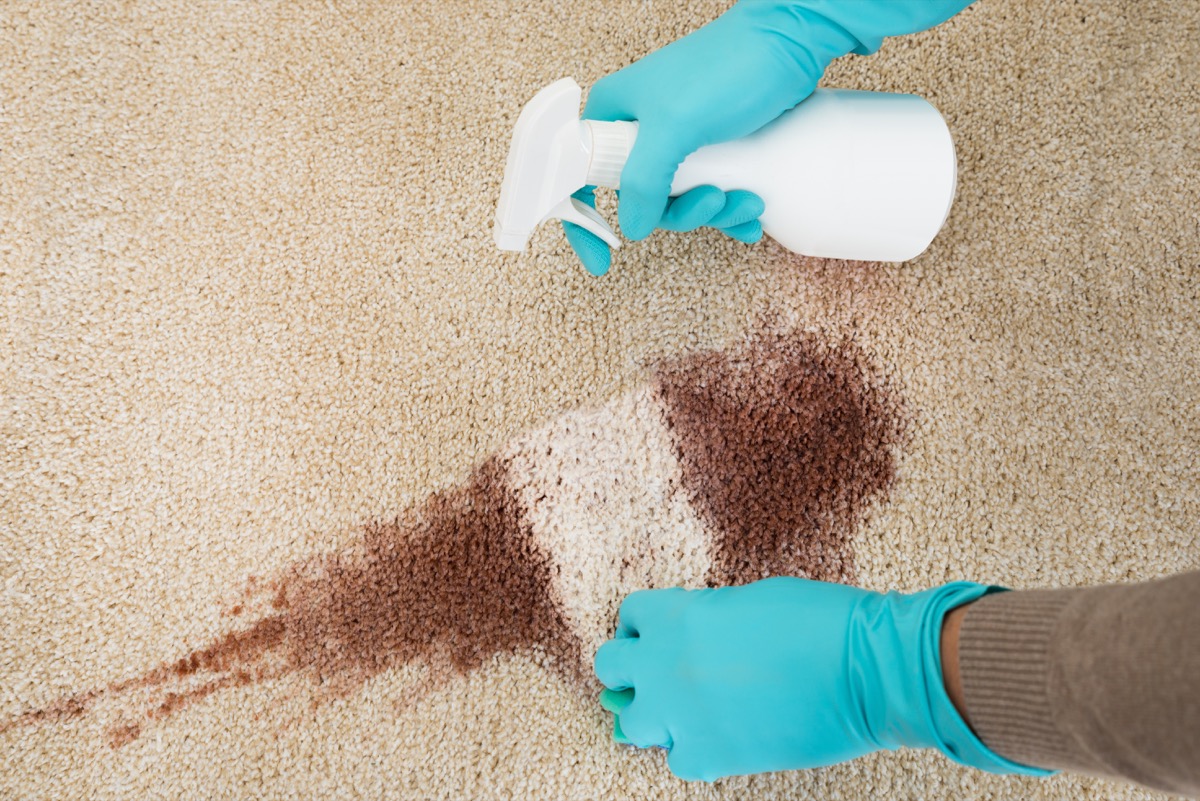
You may be eager to get out those unsightly stains on your carpet, but you’re better off in the long run if you run a spot test first. “If you don’t have the equipment to thoroughly rinse soapy stain removers out of your carpet, the residue will attract dirt,” says professional carpet cleaner Stan Valadzko, owner of SV Professional Cleaning. Not only that, but it’ll also discolor your carpet.
2
Or scrubbing carpet stains
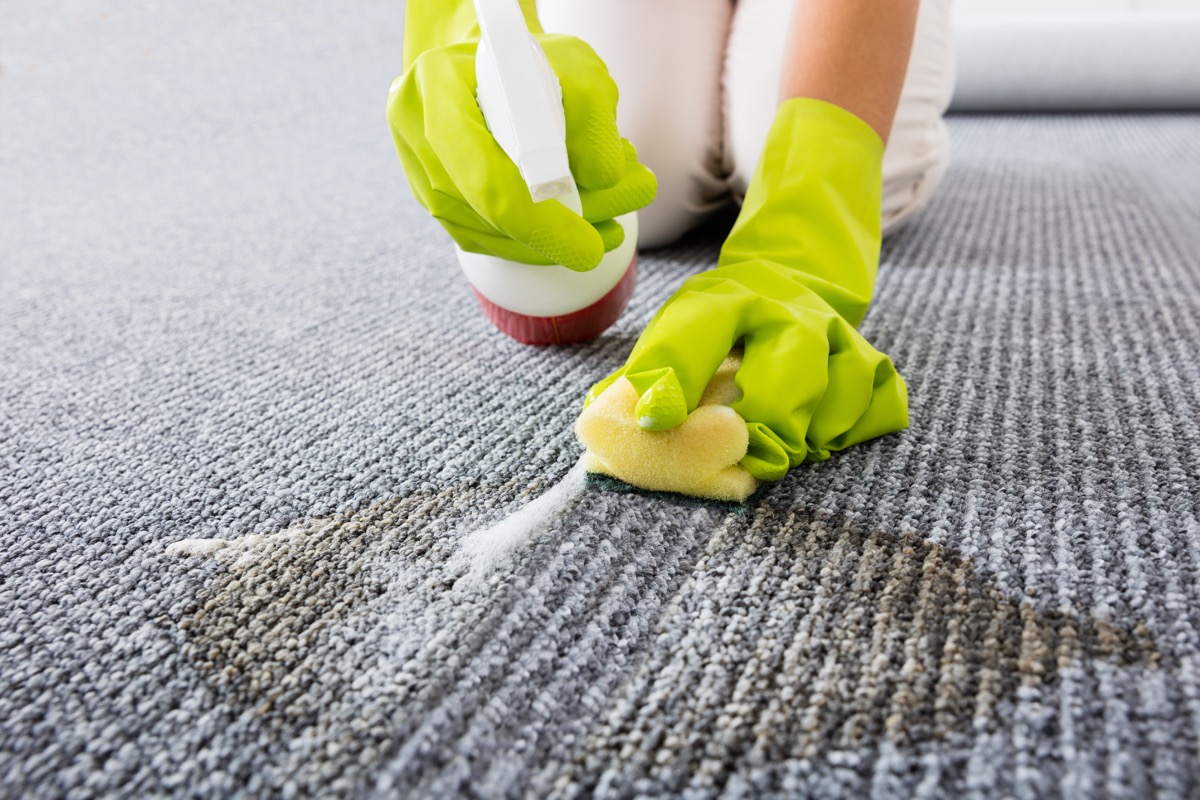
It may be tempting to vigorously scrub that spill on your carpet, but doing so will only compound the issue. “Scrubbing can actually push a stain deeper into the fibers, making it impossible to remove,” says Valadzko. He recommends blotting up any liquid and then calling a professional to remove the rest.
3
Not cleaning your dishwasher regularly
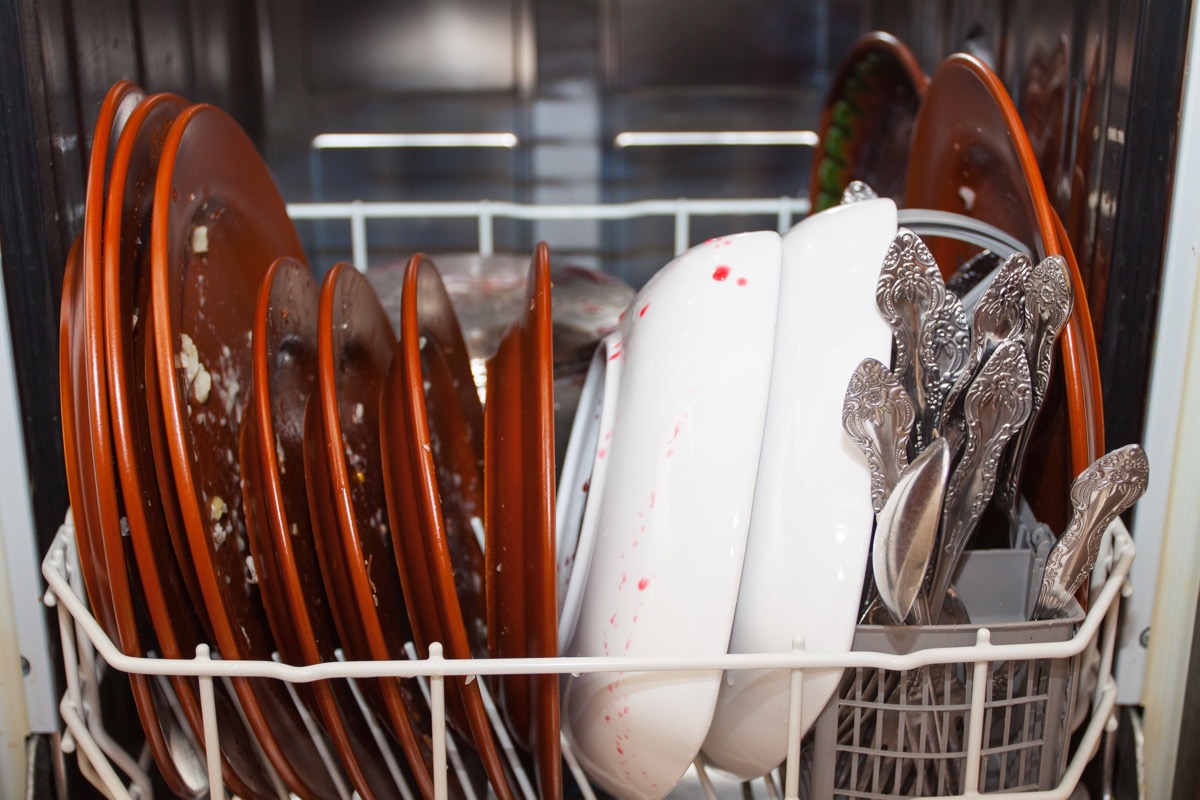
Your dishwasher cleans your dishes, but don’t expect it to get the job done in the same way when it comes to cleaning itself. “One of the main issues with dishwashers is that over time, food residue, grease, and soap scum can build up, [and] this keeps your dishwasher from working properly,” explains Cate Griffing, co-owner of Wow 1 Day Painting, Griffing Kitchens & Interiors, and West Magnolia Charm. To avoid any issues, Griffing says you should clean your dishwasher every three months.
4
Not cleaning your fireplace
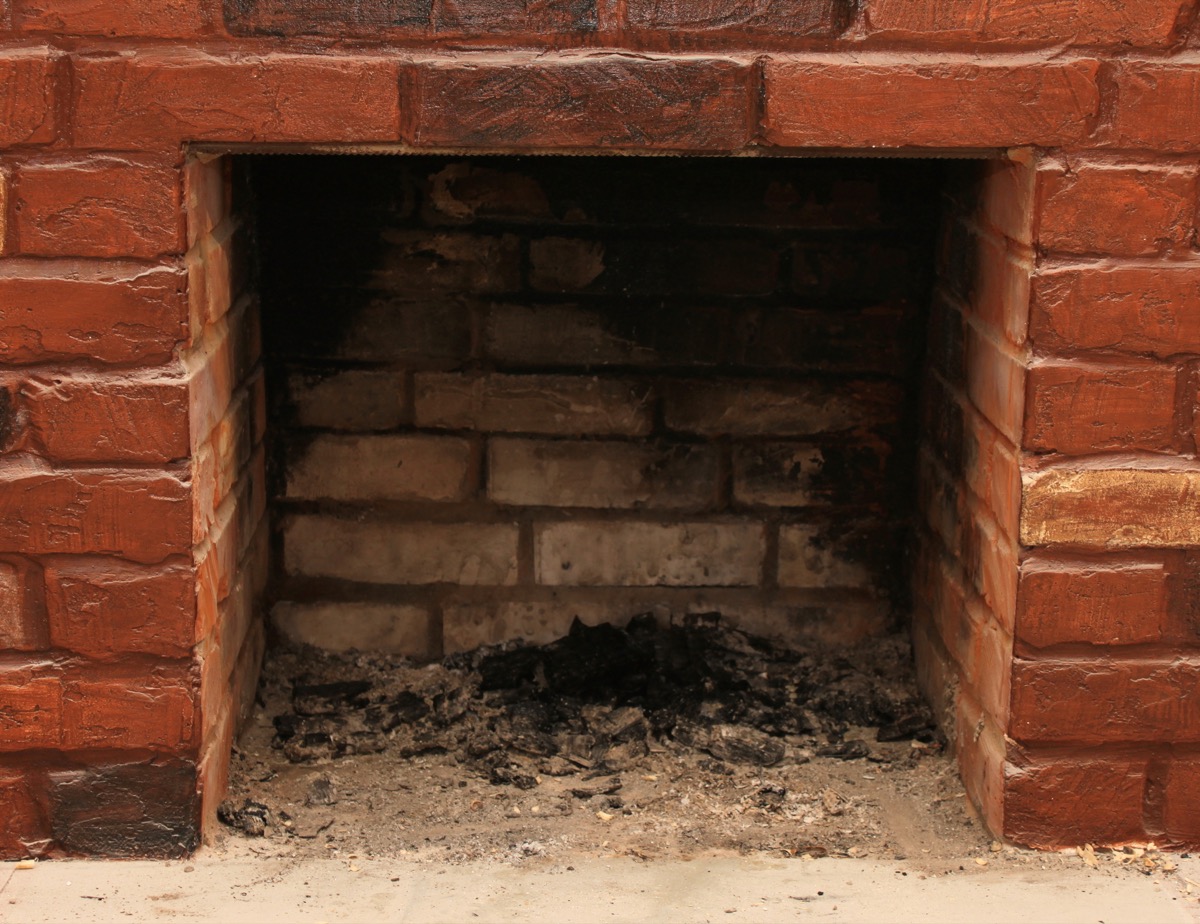
Having an old-fashioned wood-burning fireplace provides a warmth and coziness to your home that the gas-powered equivalent just never seems to measure up to—but it also requires a far more involved cleaning regimen. And it’s one you can’t afford to ignore. The carbonaceous chemical “creosote builds up every time you light a fire and the more fires you light, the thicker it gets,” Griffing says. Over time, this can lead to debris entering your home, and may even put you at risk for a chimney fire.
5
Placing appliances near your thermostat
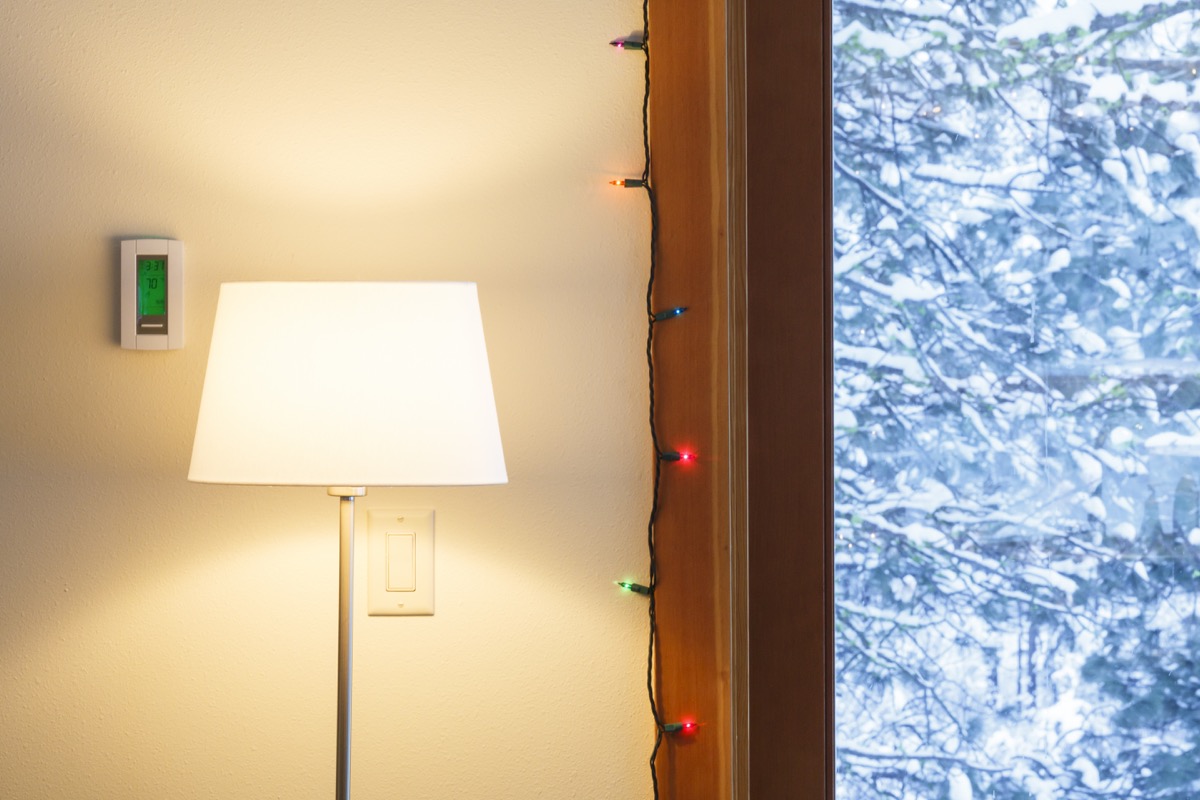
Odds are that you probably wouldn’t spend too much time considering the potential implications of putting a lamp or some other piece of electrical equipment in close proximity to the thermostat in your home. But if you take a second to think about it, it makes sense why it might not be the best idea.
“Make sure that no lamps, TVs, or other heat-emitting appliances are too close to the thermostat,” suggests Mark Dawson, COO of Benjamin Franklin Plumbing, One Hour Heating & Air Conditioning, and Mister Sparky. “Your thermostat can register the rise in temperature and respond accordingly, leading to higher bills in the summer and a colder home in the winter.”
6
Not replacing faulty appliances
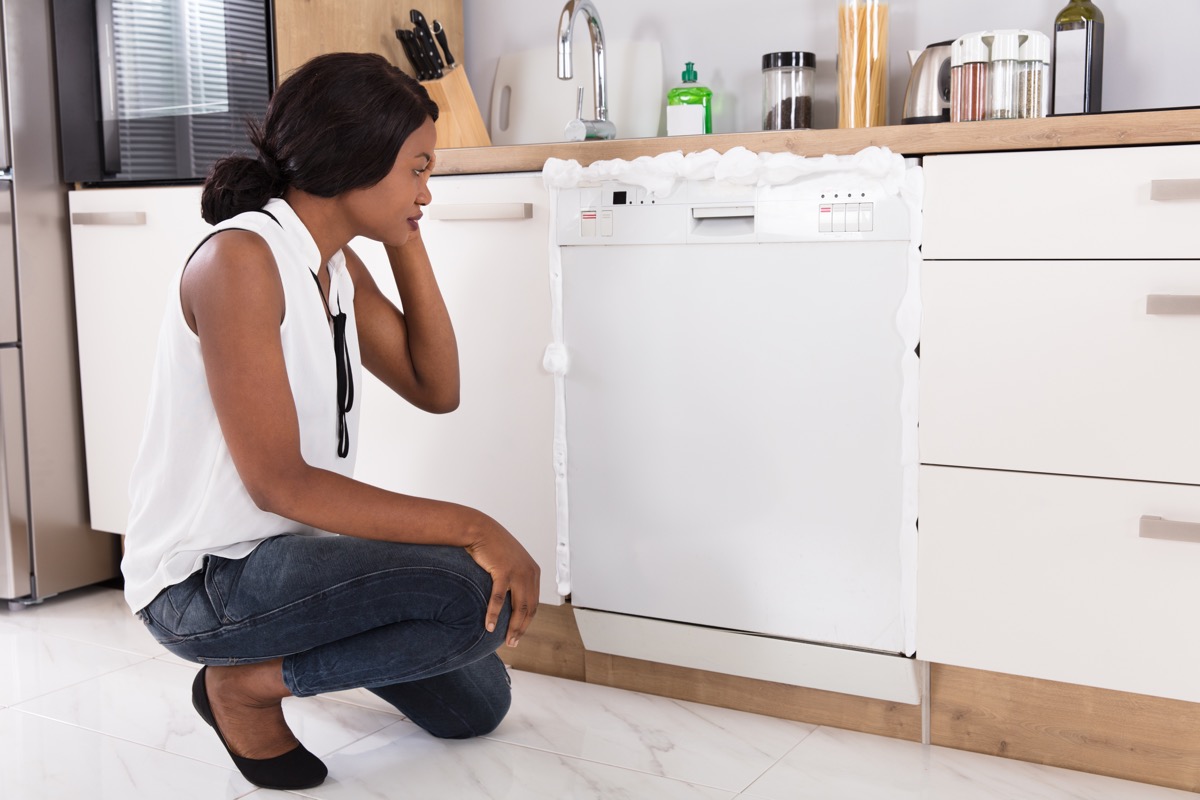
While replacing appliances can be a costly endeavor, failing to do so when they start malfunctioning is a mistake that can be far more expensive in the long run. “A faulty appliance can send surges of electricity into your home’s electrical system and the resulting damage can range from a tiny bit of wear and tear on other appliances to a destructive electrical fire,” Dawson says.
When in doubt, have a professional come service the appliance at the first sign of trouble—and if they suggest replacing it, heed their warning.
7
Not cleaning your refrigerator’s condenser coil
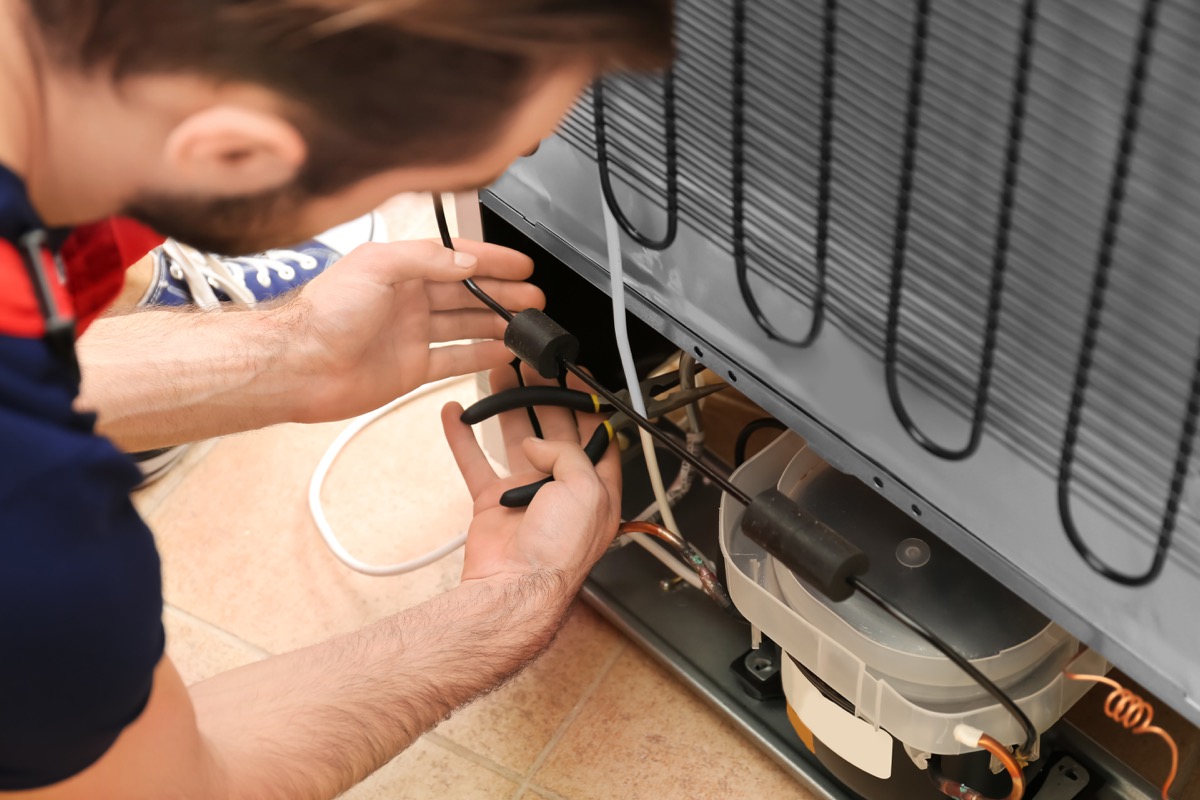
You may clean out the inside of your refrigerator on a regular basis, but if you’re not cleaning its condenser coil, you’re making a fatal fridge error. “If you’ve noticed that your fridge is constantly running but doesn’t seem to be cold enough, then you’ll need to clean your condenser coil,” says Brett Elron, owner and lead interior designer at Barter Design, an interior design consulting firm in New York. Failing to do so may even shorten the lifespan of your appliance.
8
Ignoring flickering lights
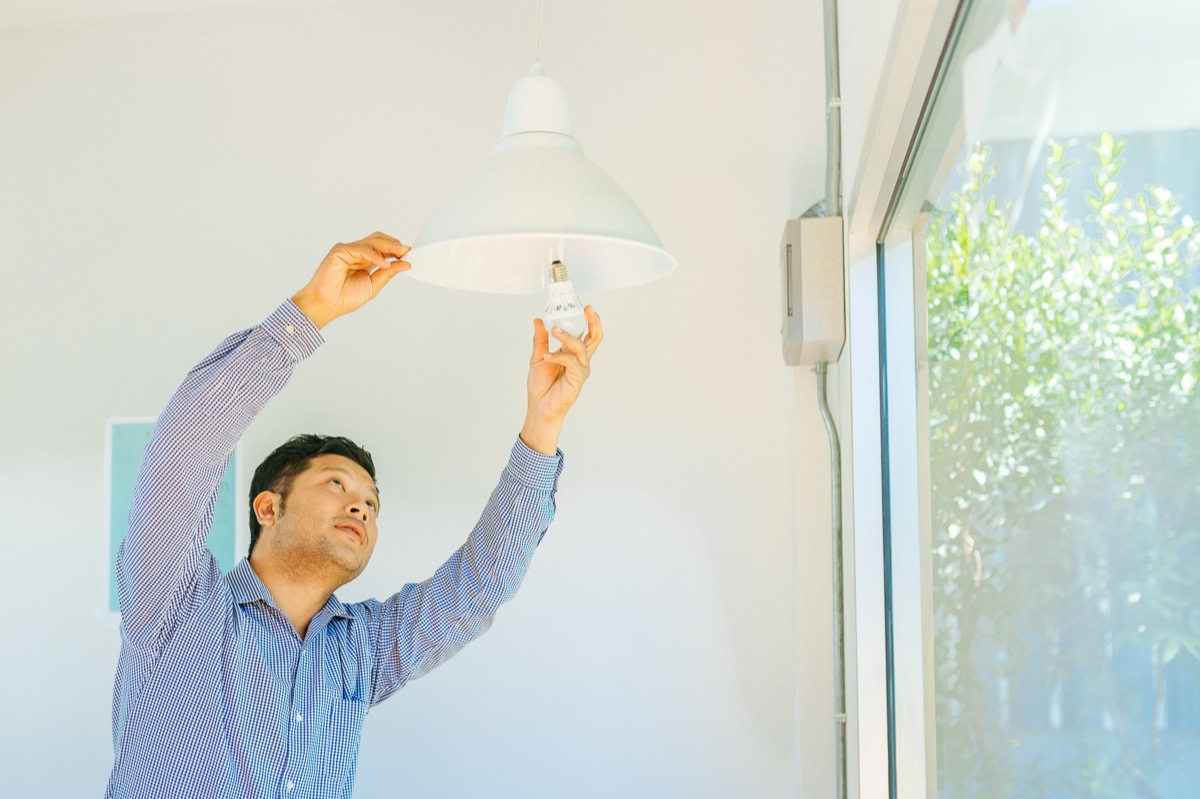
It’s possible that you’ve lived with that one light in the hallway subtly flickering for so long that you barely even notice it anymore. But that doesn’t mean it’s not still trying to tell you something. Dawson says a flickering lightbulb could be a sign of a dangerous electrical issue. If you’ve tried replacing the bulb to no avail, it’s time to call an electrician to make sure there isn’t a potentially serious problem that needs to be tended to.
9
Not considering where you’ll need electrical outlets
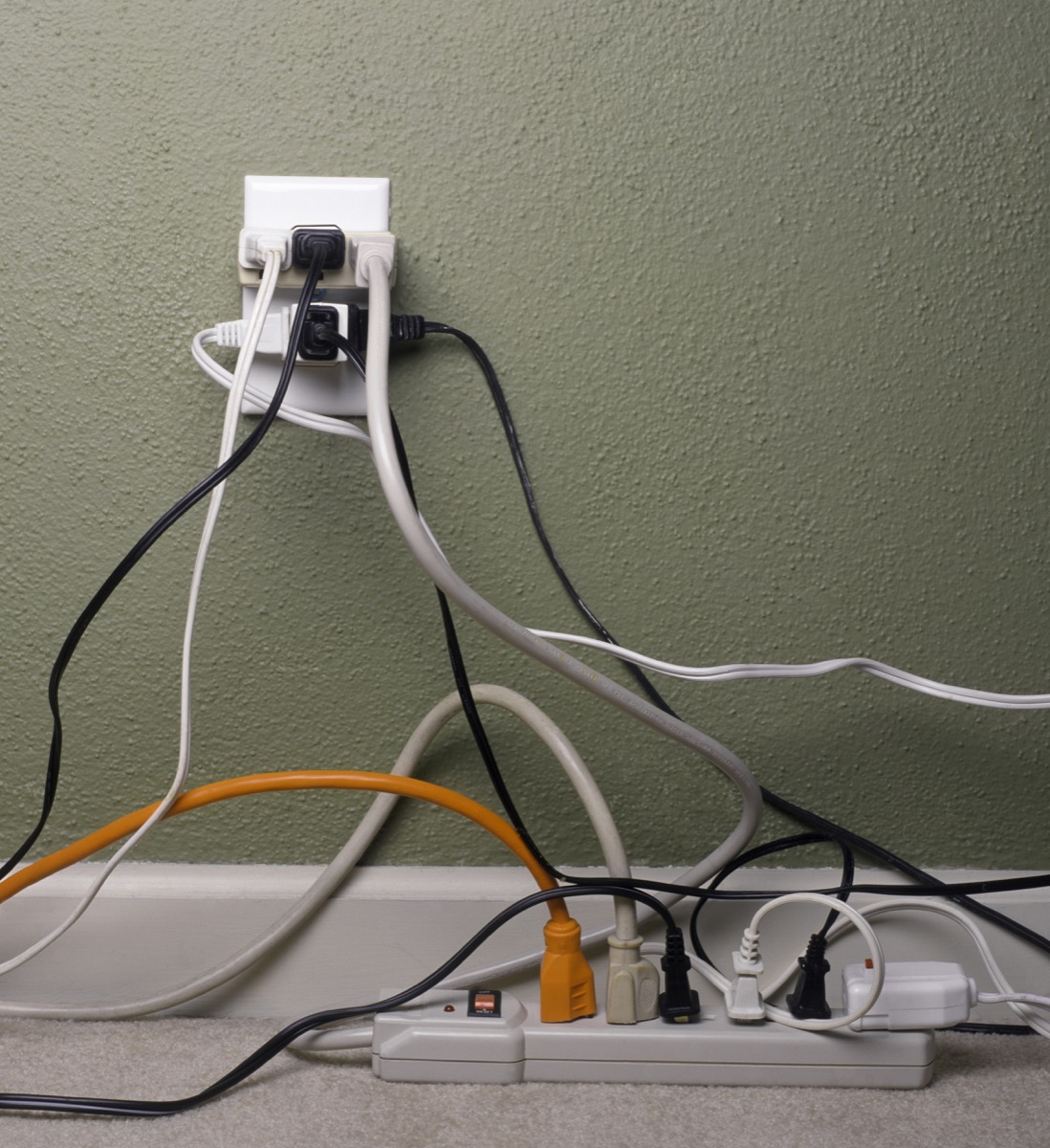
If you’re decorating your home without planning out where you’ll need electrical outlets, you could be setting yourself up for major repairs in the future. “When you have subcontractors in your house, think 10 steps ahead. Ask them to wire areas for light fixtures even before you purchase them,” suggests Kellie Sirna, co-founder and principle of Studio 11 Design. “This will save time and money when they won’t have to come back later on.”
10
Not repairing loose bathroom tiles
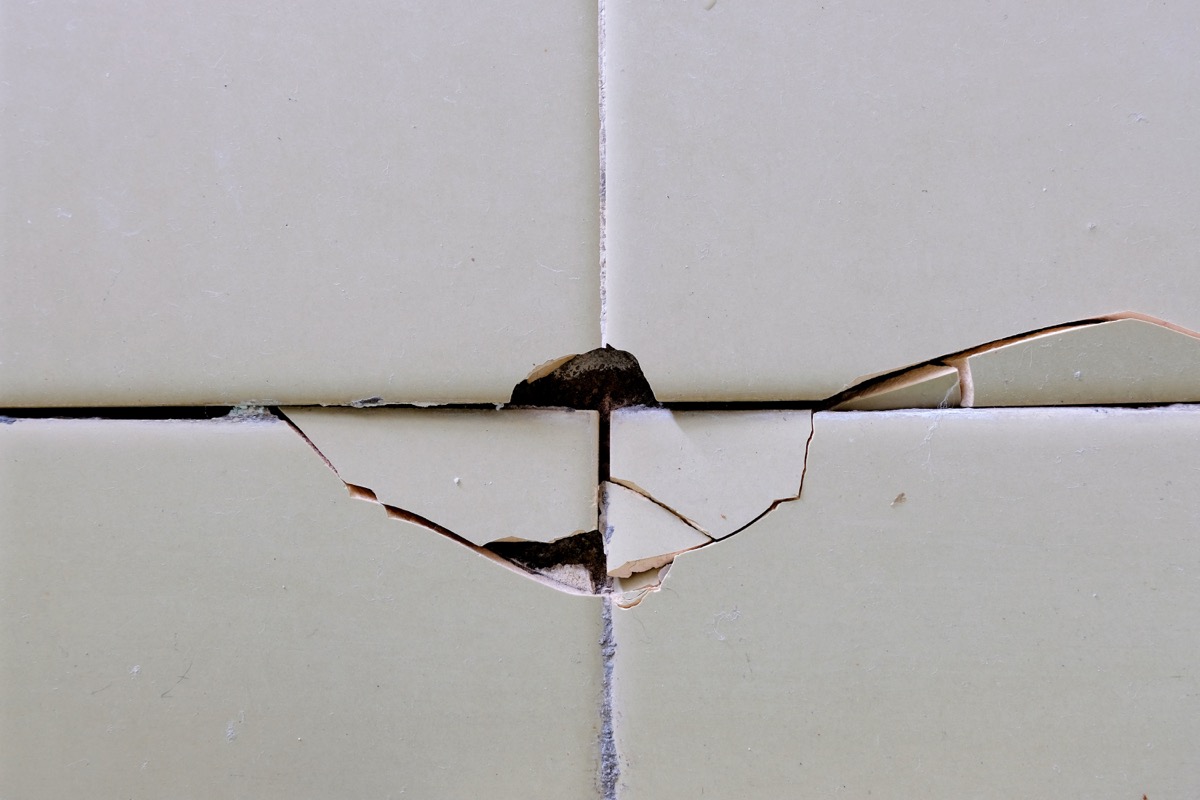
Those loose bathroom tiles may seem like a small repair, but they can lead to big problems in the future if you don’t fix them in a timely manner. “These cracks can allow water to seep through, causing rot,” says Elron. So, when in doubt, replace that grout!
11
DIYing low water pressure solutions
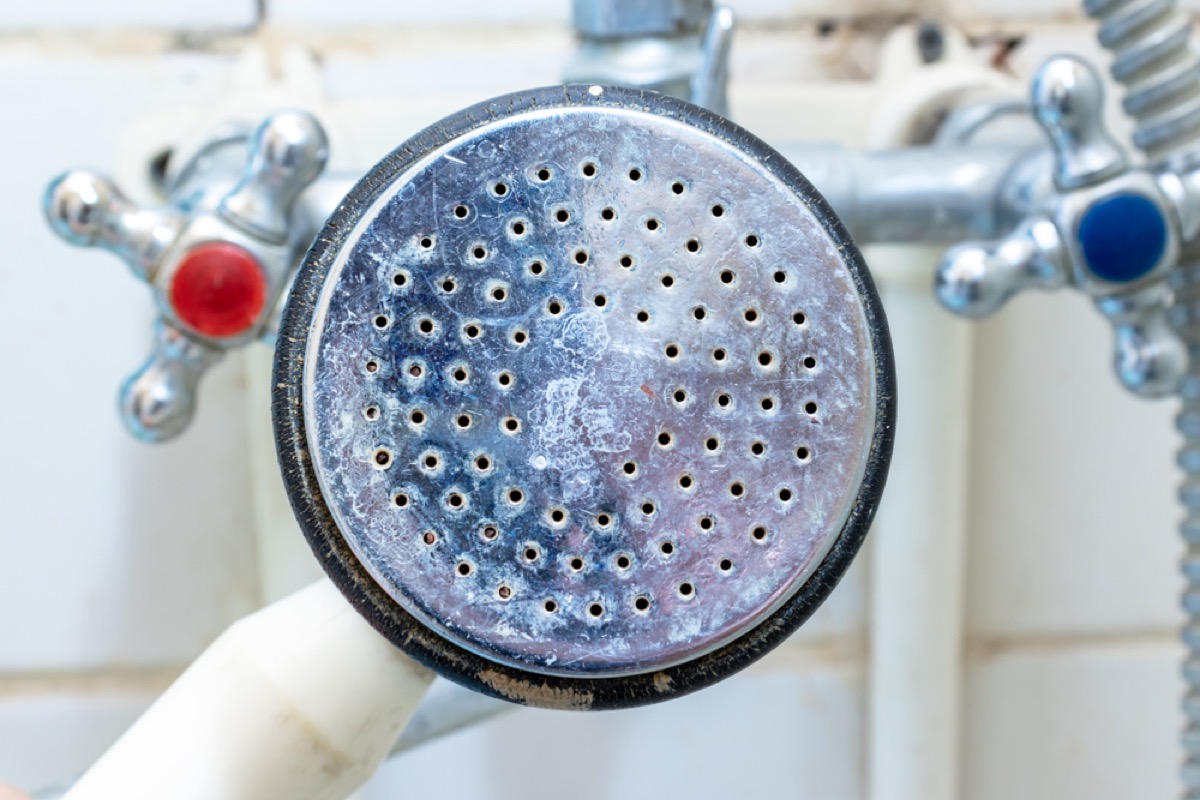
Lime buildup and shower head debris aren’t the only reasons you might be experiencing low water pressure; if the problem persists, it’s time to call a professional. In many cases, “low water pressure is much worse than just an aerator gunk issue,” explains Doyle James, president of Mr. Rooter Plumbing, a Neighborly company. “There could be a serious issue at hand, such as a fractured pipe, an eroded water line, or a water link in the system”—none of which can be fixed with a DIY approach.
12
Using the wrong pipe materials to fix plumbing problems
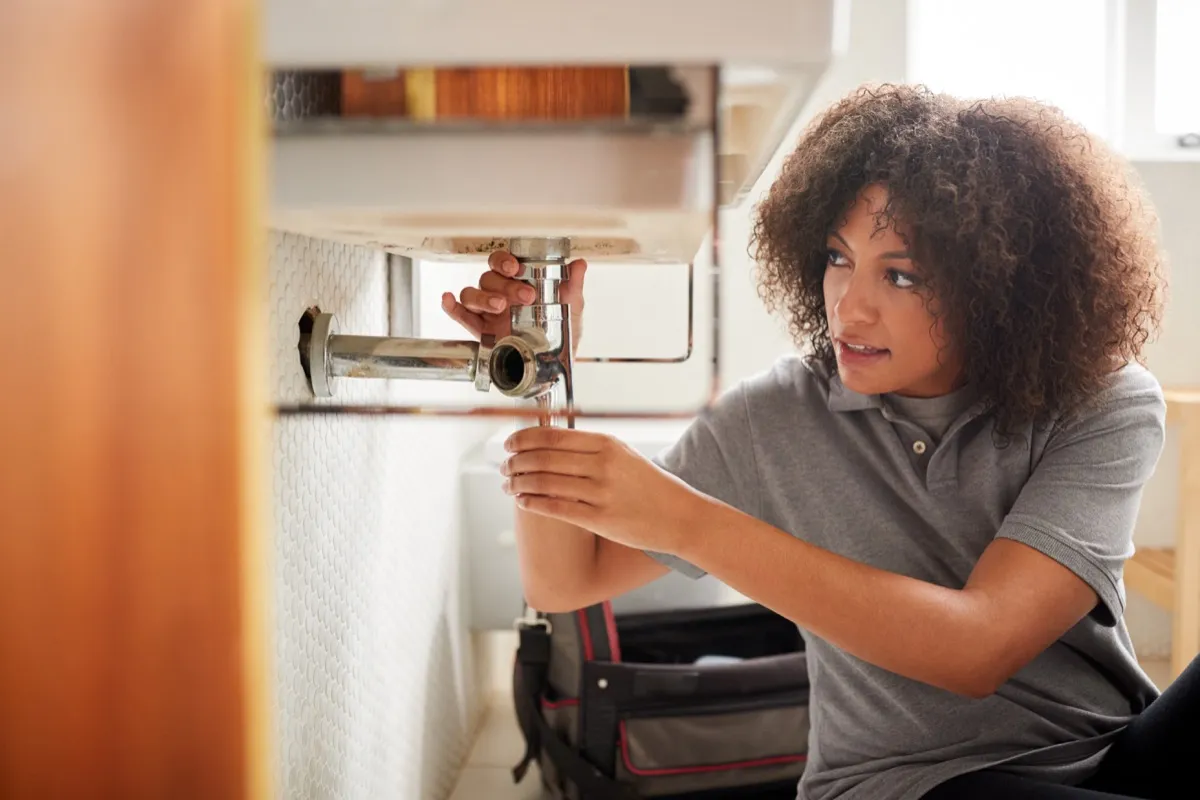
When it comes to your home’s plumbing system, all pipes are not created equal. And connecting mismatching materials can lead to a problem bigger than the one you were trying to repair in the first place. “Some types of plastic can’t handle hot water,” Dawson says. Other combinations to avoid? Using copper connectors on galvanized pipes, which can cause electrolysis and lead to leaks and damage, he says.
13
Using PVC connections under your sink

Additionally, using PVC in your DIY plumbing job may cause more problems than it solves. “Slip fit PVC plumbing parts sold at your big box stores have a tendency to leak,” says The Real Estate Solutions Guy, Robert Taylor. He suggests ABS fittings instead.
14
Not installing a P-trap for your bathroom pipes
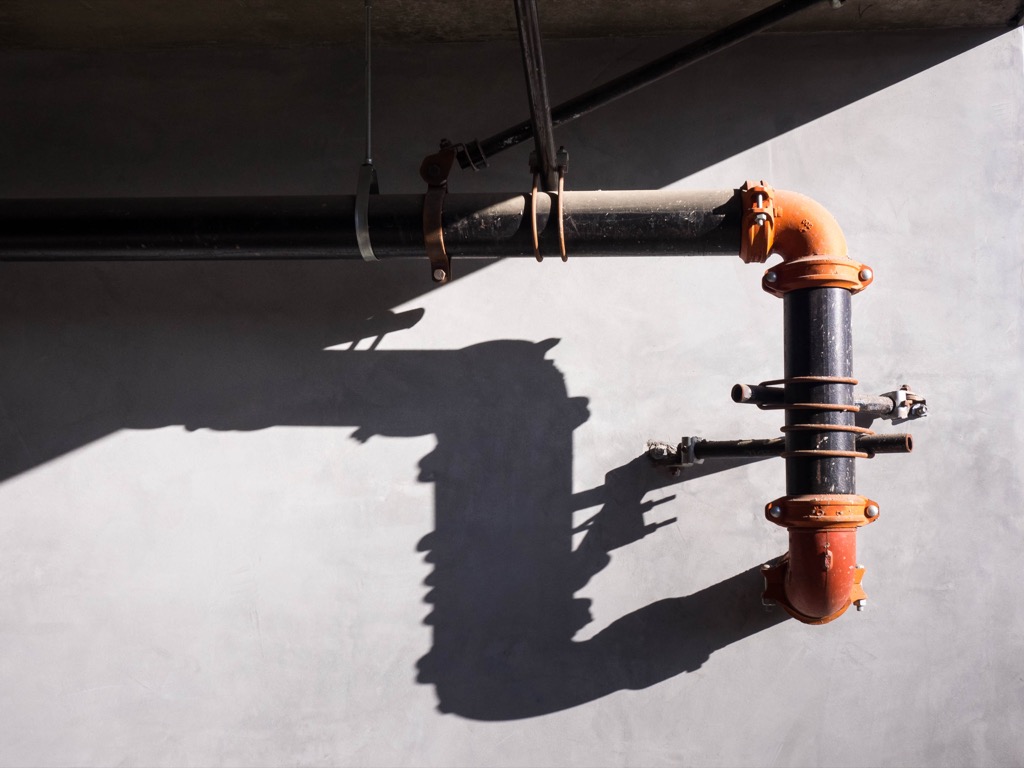
When it comes to certain jobs, you just can’t take shortcuts. And installing a P-trap is one of them, according to Daniel Quindemil, CEO at I AM Builders. A P-trap, which prevents sewer gases from rising up through a drain, is an essential part of a plumbing system, but one that often goes overlooked by inexperienced DIYers. If you don’t install one, “you’ll end up with clogs and sewer smells in your shower. And it’s impossible to fix without tearing out the tile,” explains Quindemil.
15
Ignoring exposed bathroom wiring
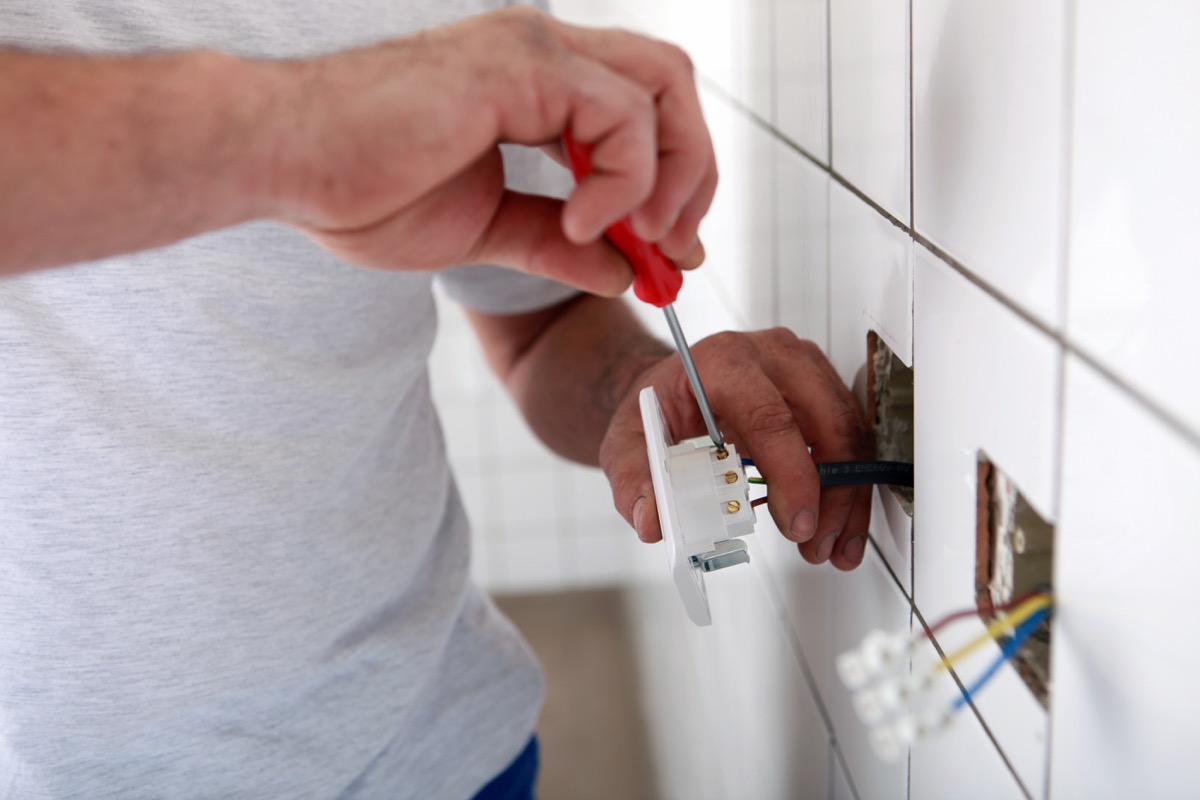
Sure, you may tell yourself that you’ll eventually fix that exposed wiring in your bathroom, but it’s been six months. And with every passing day it goes unaddressed, you’re putting yourself at greater risk of a serious injury. “Exposed or frayed wiring in the bathroom should be repaired immediately,” Dawson says. He also advises that all bathroom outlets should have a ground-fault circuit interrupter, which shuts down power immediately when a faulty electrical device is plugged in, protecting you from electric shock.
16
Applying wood filler between floorboards
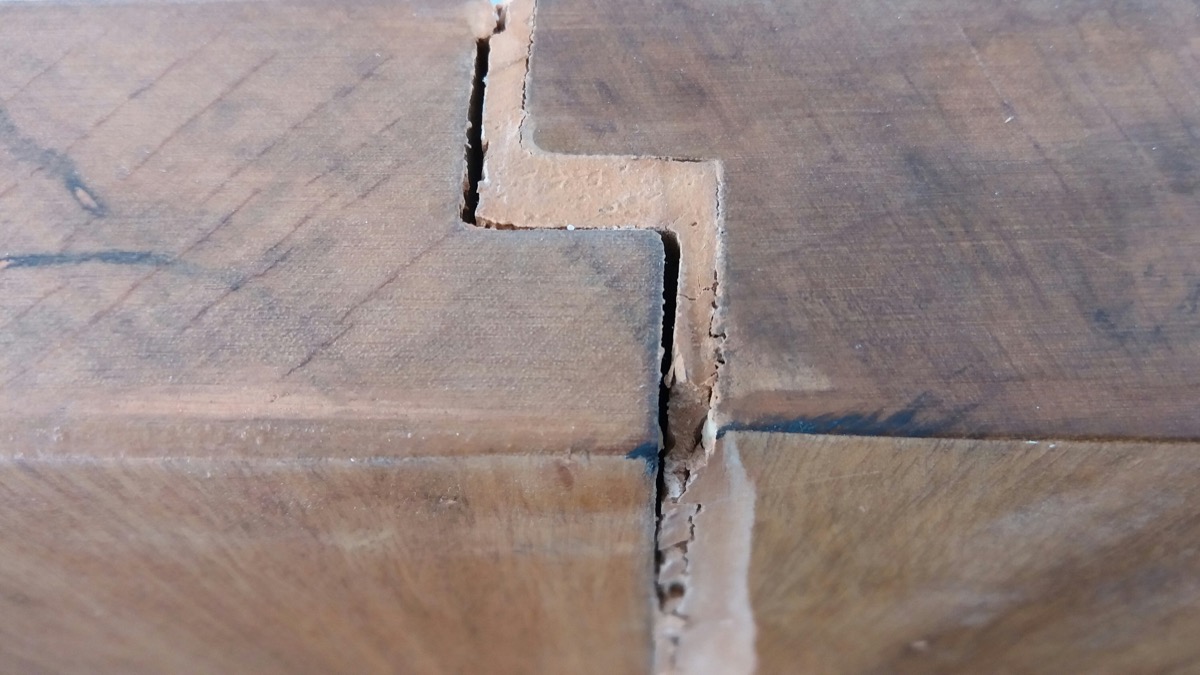
It may be tempting to fix those gaps between floorboards with wood filler, but doing so is almost always a big mistake. “Wood filler will naturally crack over time if you apply it on or between loose floor boards,” explains Sonja Gosine with real estate service Hauseit.
Before making any aesthetic repairs to your flooring, it’s important to stabilize and fix the subfloor, as well as any loose boards, she explains.
17
Not determining the cause of a wall crack before fixing it

Not determining the root cause of a crack or imperfection before fixing it can cause larger problems in the long run. “If the crack is caused by normal settling and the crack is small, then fiber tape and some spackle will do the trick,” explains Melanie Hartmann, owner of Creo Home Solutions. “However, if there are structural issues causing the crack, then fiber tape is just tape on a crack that will continue to grow.” And if you’re looking at the latter, it’s time to call in the professionals, she says.
18
Not prepping your walls before painting them
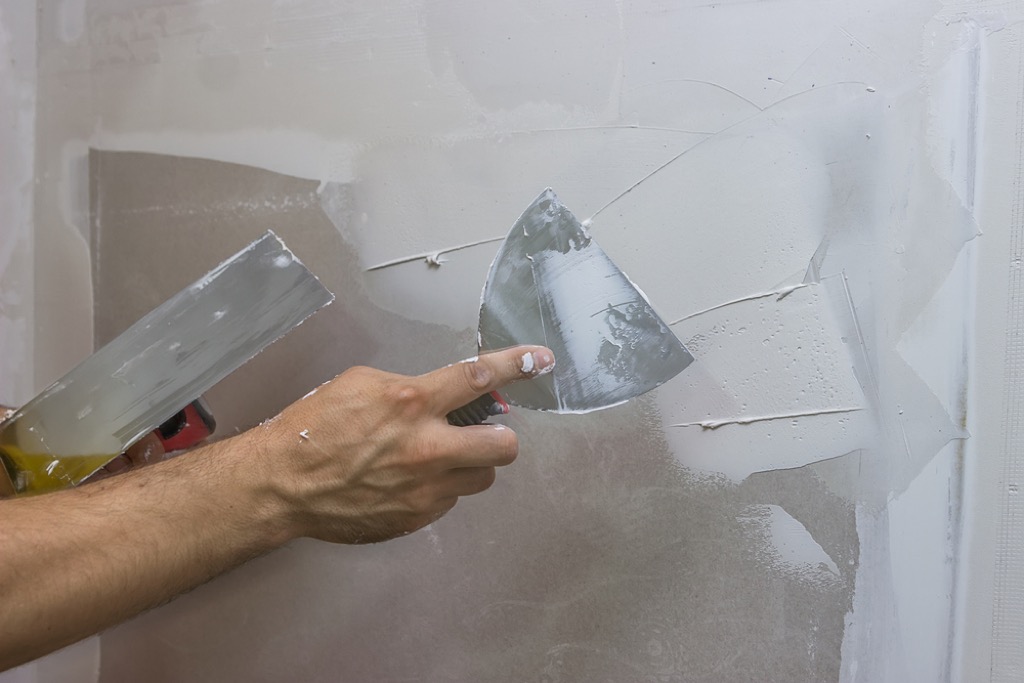
If you’re not prepping your walls before you paint them, it won’t be long before that fresh paint job you spent your whole Saturday on is in need of touching up. “Prep is the most important step to painting,” says Griffing. “Everything from cleaning the walls and fixing cracks should be done beforehand.”
19
Not sanding after spackling
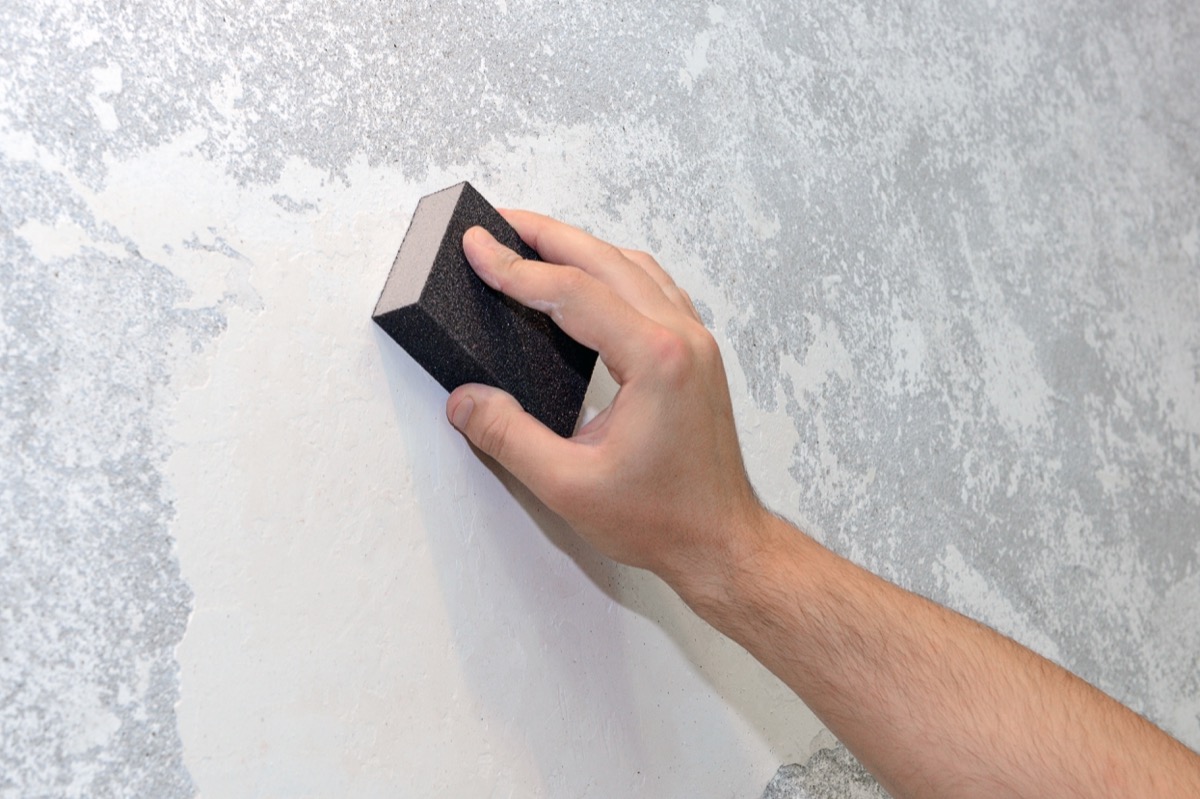
You may be eager to get that paint job done, but if you’re not sanding down after you spackle, it’ll look sloppy when all is said and done.
“If you aren’t sanding away rough edges after filling a hole with spackling, you’ll be faced with a rough and bumpy paint job when you paint over the hole,” explains Elron.
20
Painting wood without priming it first
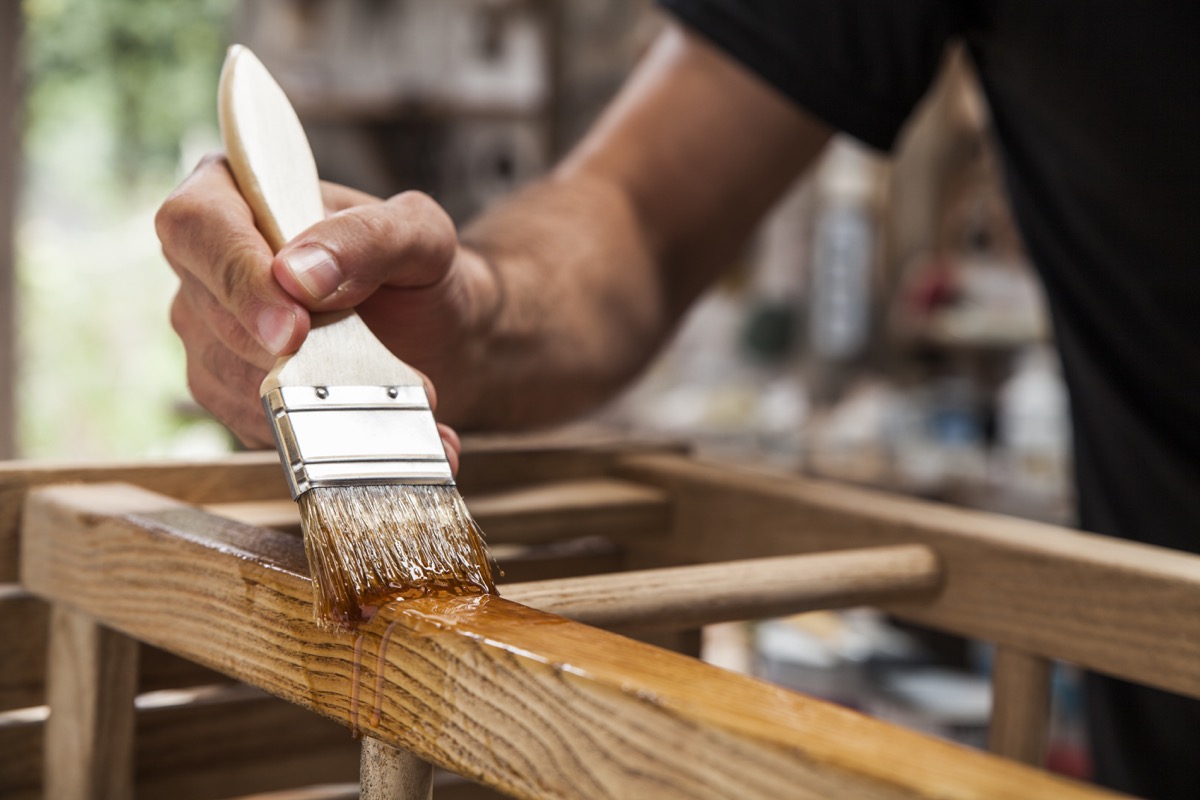
It’s not just drywall and plaster that need to be primed before painting—the same goes for unfinished wood surfaces. Without using a primer first, “you can risk having moisture seep into the wood, which will later cause rot and damage,” explains Elron.
21
Using oil paint over latex paint
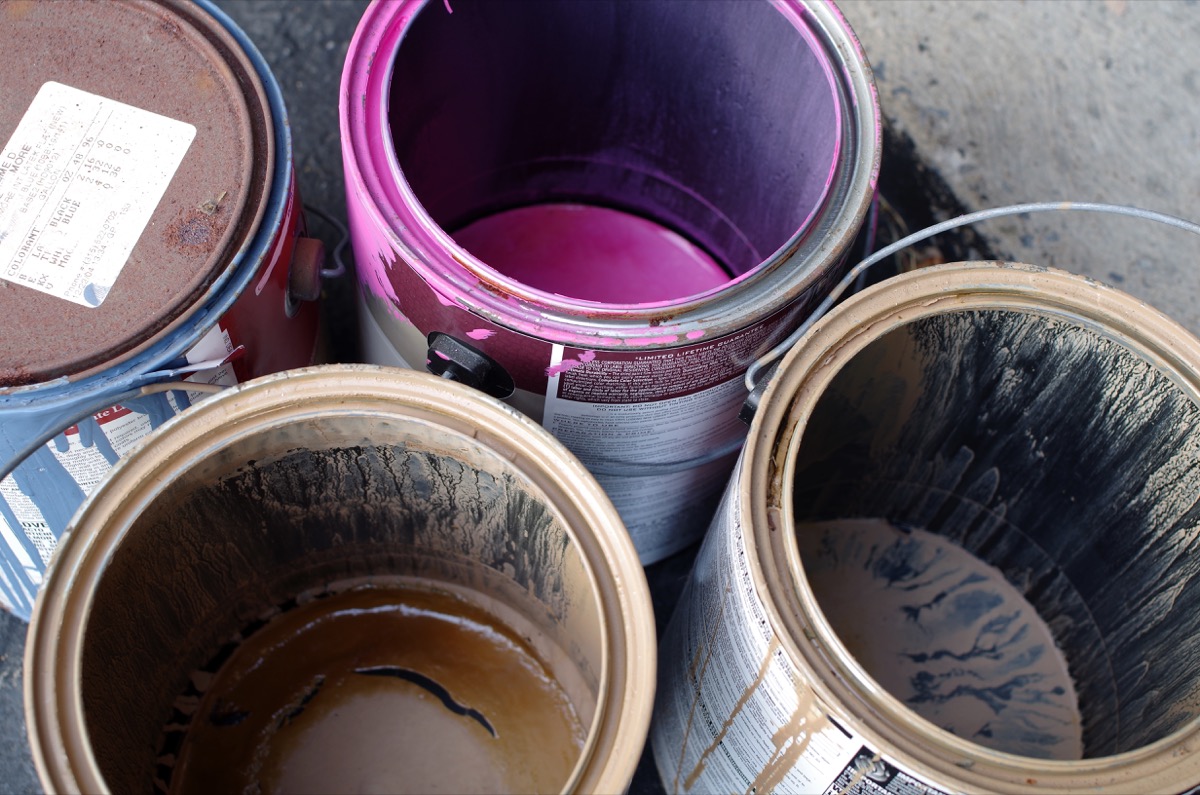
Before you start fixing those paint chips on your trim work, it’s important to know what kind of paint was used underneath. When you paint over oil paint with latex, “this leads to new paint peeling and scratching very easily,” explains Jeff Neal, a project manager for commercial painting contractor Capital Coatings.
22
Using glossy paint for walls and ceilings
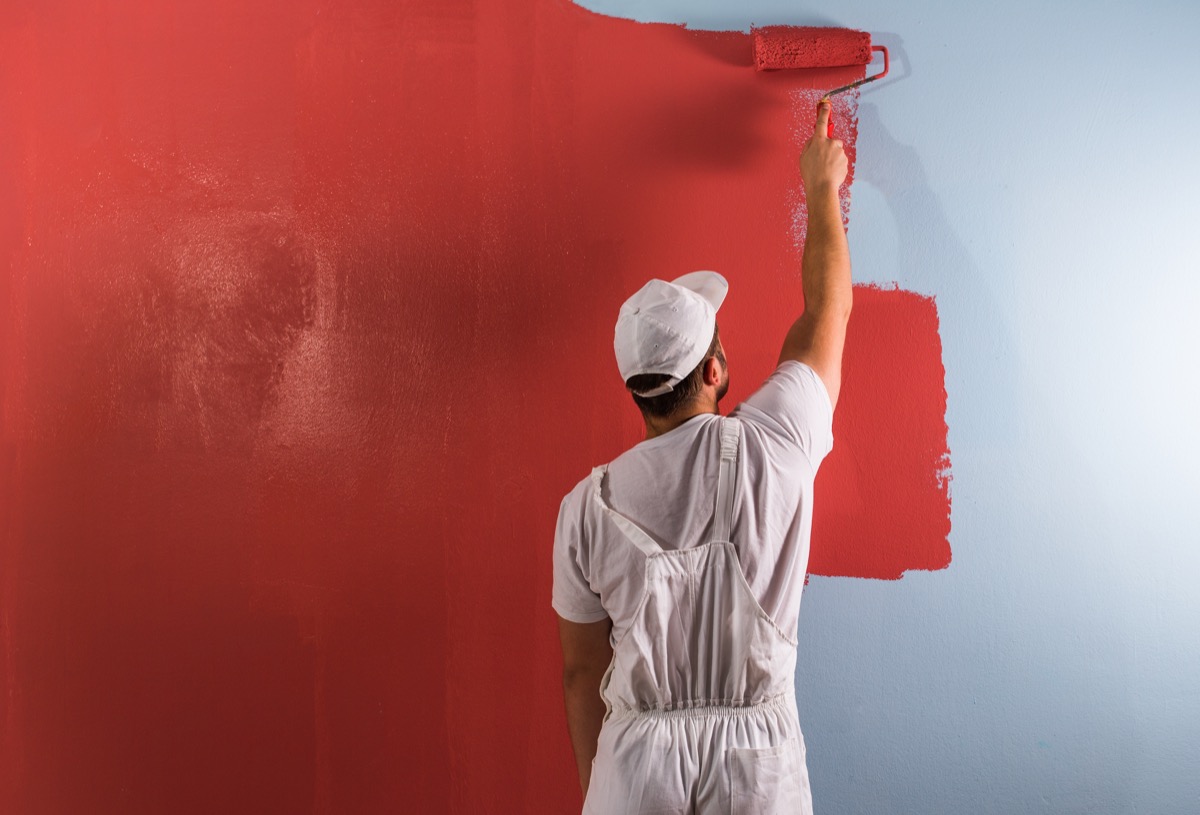
Think any old paint will work on your walls and ceilings? Think again. “The more shine a paint has, the more imperfections will be noticeable,” explains Quindemil. Instead, he recommends using flat paint, which allows you to “easily touch up areas and hide imperfections.”
23
Not using a laser level when hanging artwork
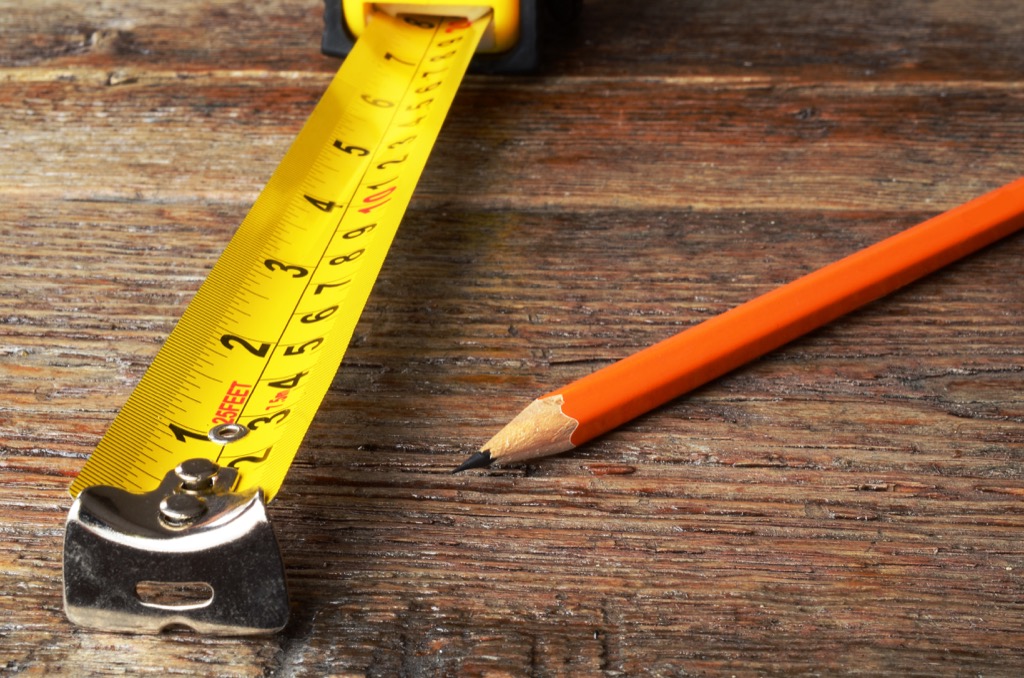
Don’t try to eyeball measurements or take other shortcuts when hanging artwork and other home décor on your walls. “When measuring without using a laser, you need to use the floors and ceilings as your benchmark,” says Quindemil. “Sometimes floors and ceilings can be off level up to half an inch,” he notes, which will leave your artwork noticeably crooked.
24
Not pretreating new construction for termites
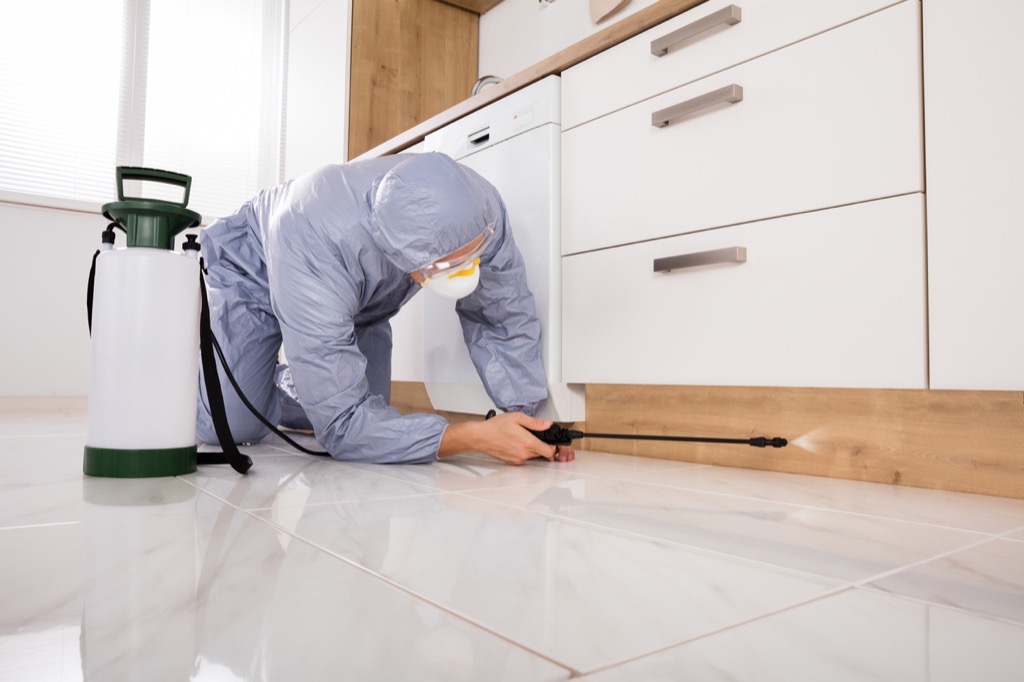
Before you so much as start drawing up blueprints for that new shed or addition to your home, it’s time to call in a pest control expert. “We get calls often from folks who have built an addition or detached garage or shed or something like that and did not get a preventative termite treatment before they built,” explains Leah Hazelwood, vice president of Go-Forth Pest Control. “Now, after the fact, they are dealing with a termite infestation and damage that could have been prevented from the beginning.”
25
Not replacing foggy windows
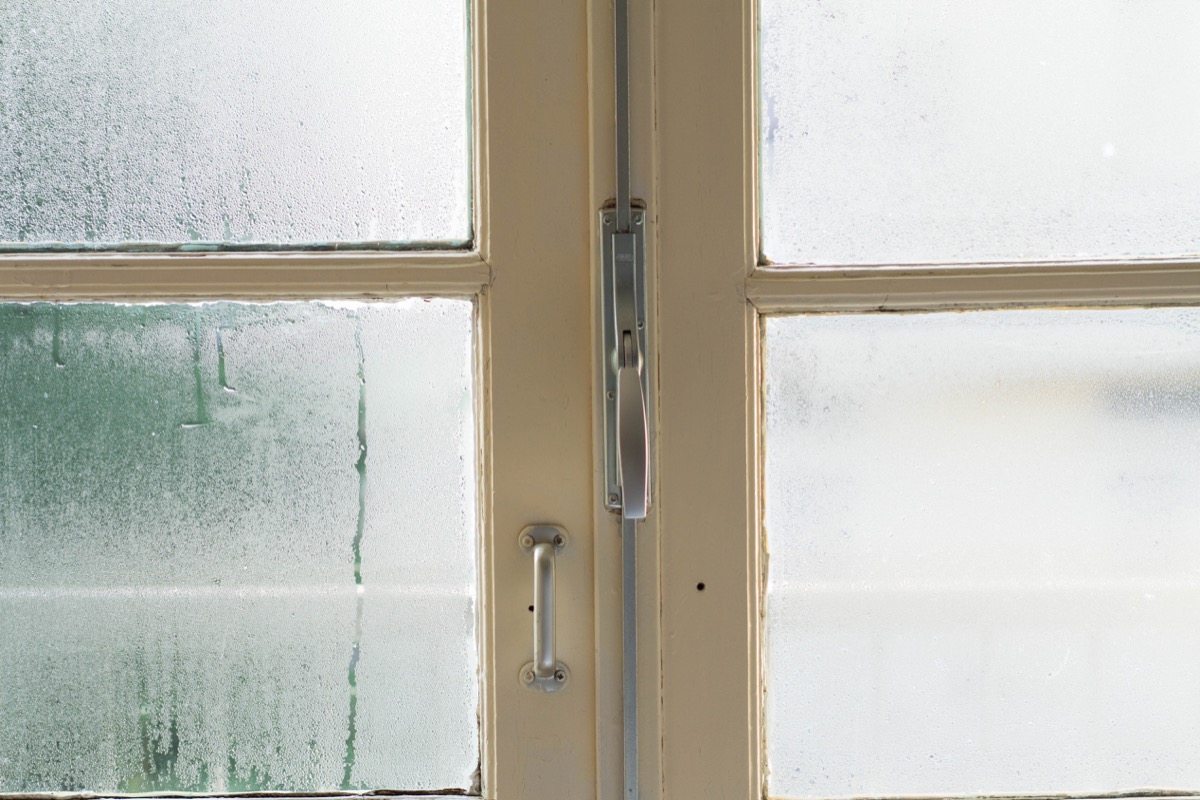
A fogged-up window means you’ve got a bigger problem lurking below the surface—and one you can’t afford to ignore. “The seal on your window could be broken and warm air is coming in contact with cold air,” says Elron, meaning you’re potentially causing your HVAC bills to skyrocket and introducing moisture—and potentially rot—into your home.
26
Or not cleaning the sealing around your windows
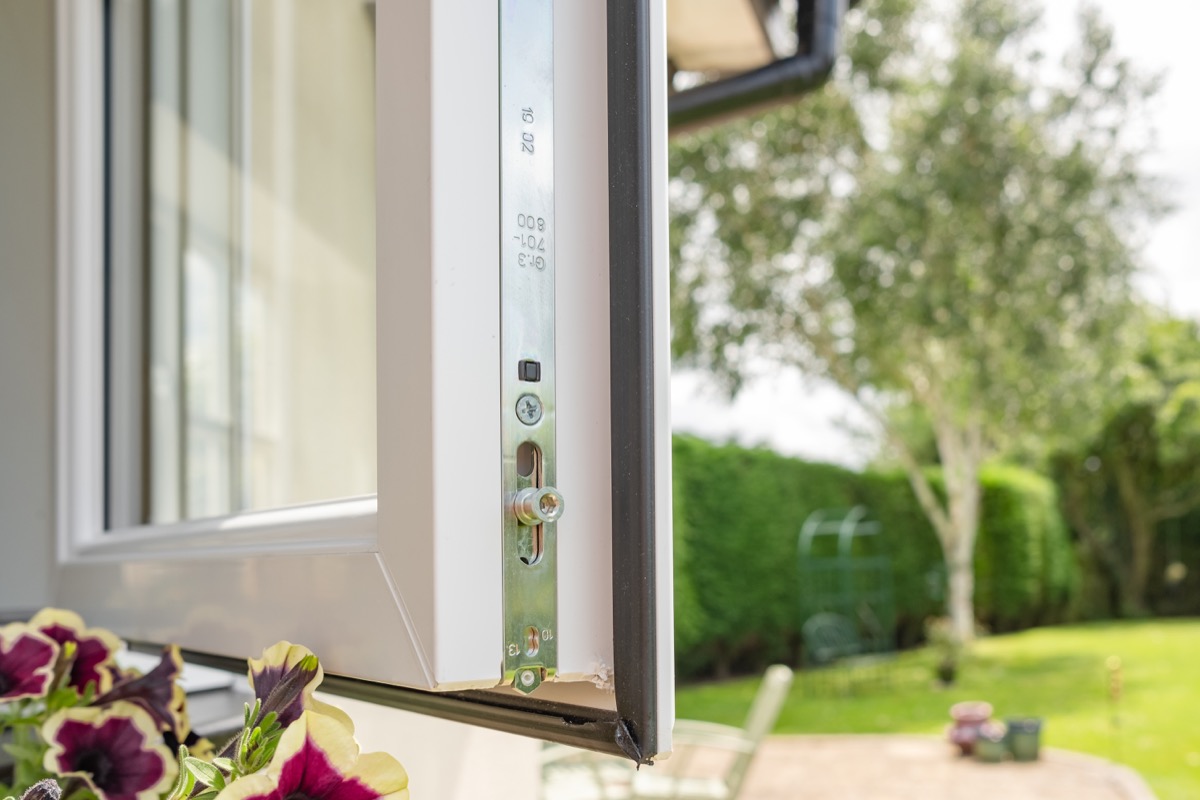
When cleaning the windows, we’re guessing you probably clean the windowsill and the actual window itself, right? But what about the sealing around the perimeter of the window that keeps everything airtight? “Your windows take a beating and often collect dirt and debris eating down the seals,” explains home inspector Brian Botch, owner of House Fluent Inspections. If you keep the tracks clean, however, you can keep the dirt and debris out of your home and keep your windows functional for longer.
27
Fertilizing your lawn at the wrong time of year
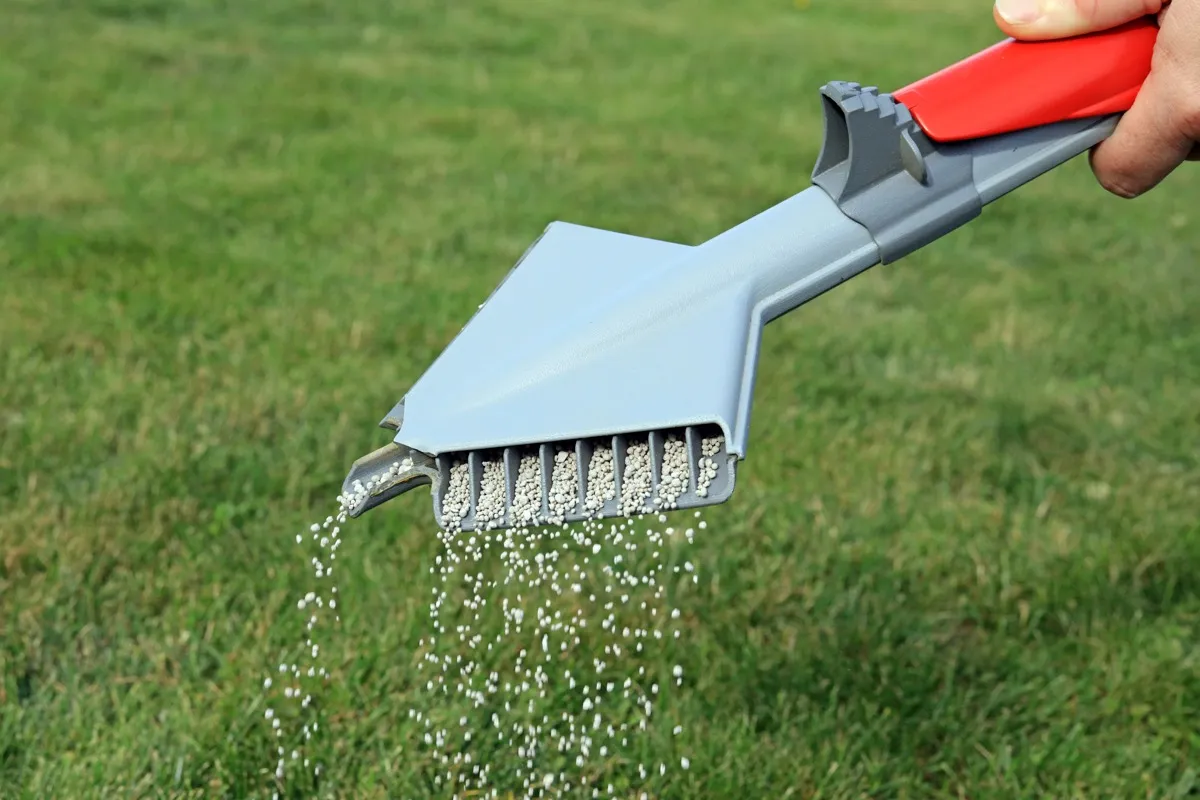
Your lawn may benefit from a fertilizing treatment—but only if you’re applying it at the correct time of year. “If you’re only going to fertilize once a year, I’d be sure that it’s around Labor Day because that’s when your lawn needs the most nutrients,” says Elron.
28
Trying to hide your HVAC equipment

HVAC equipment may not be the most aesthetically pleasing aspect of your home’s exterior, but it’s best to resist the urge to conceal it with landscaping. “Surrounding it with plants or shrubs could block proper ventilation and clog the system,” explains Dawson. He recommends making sure that there’s plenty of open space around your unit to prevent any issues.
29
Allowing moisture to build up in your HVAC system
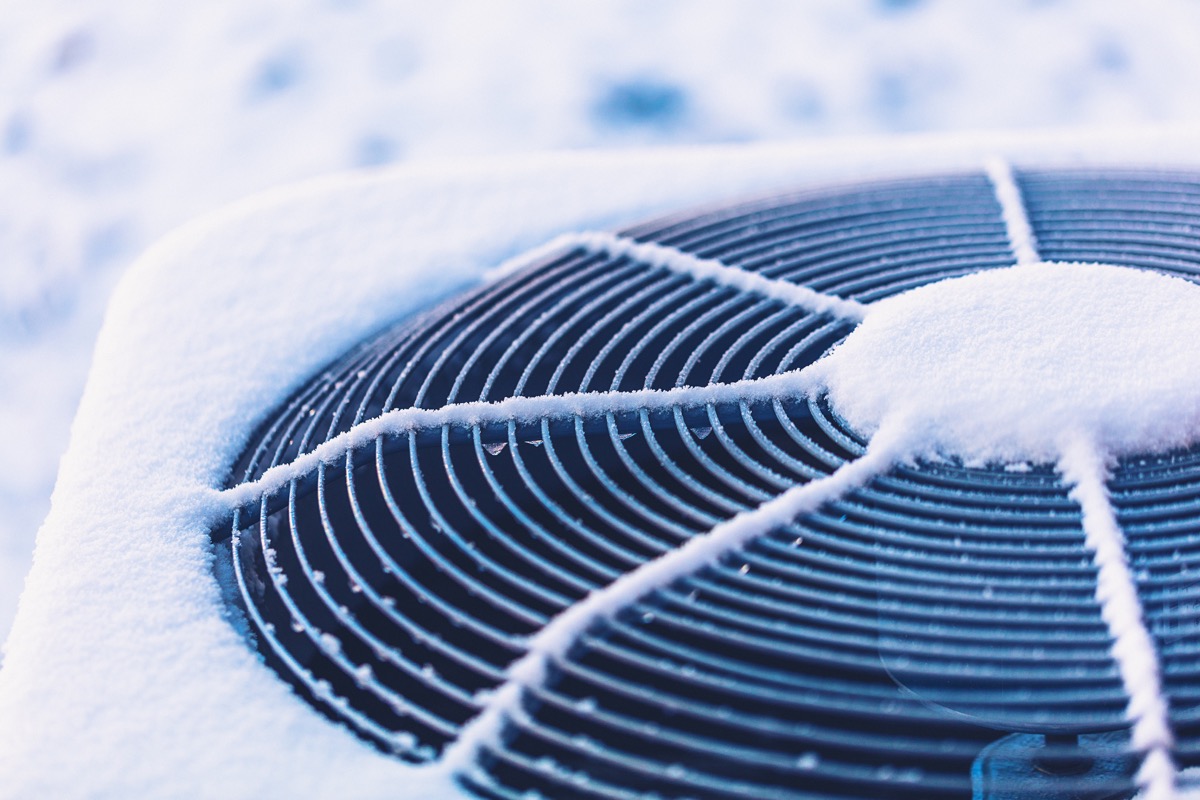
That moisture indicator on your HVAC system is important—and when it goes off, it shouldn’t be ignored. “Air conditioning systems should not have moisture within the refrigeration system,” explains Richard Ciresi, franchise owner of Aire Serv, a Neighborly company. He notes that a professional will have to vacuum it out to get your system working effectively again.
30
Letting leaky ductwork go unchecked
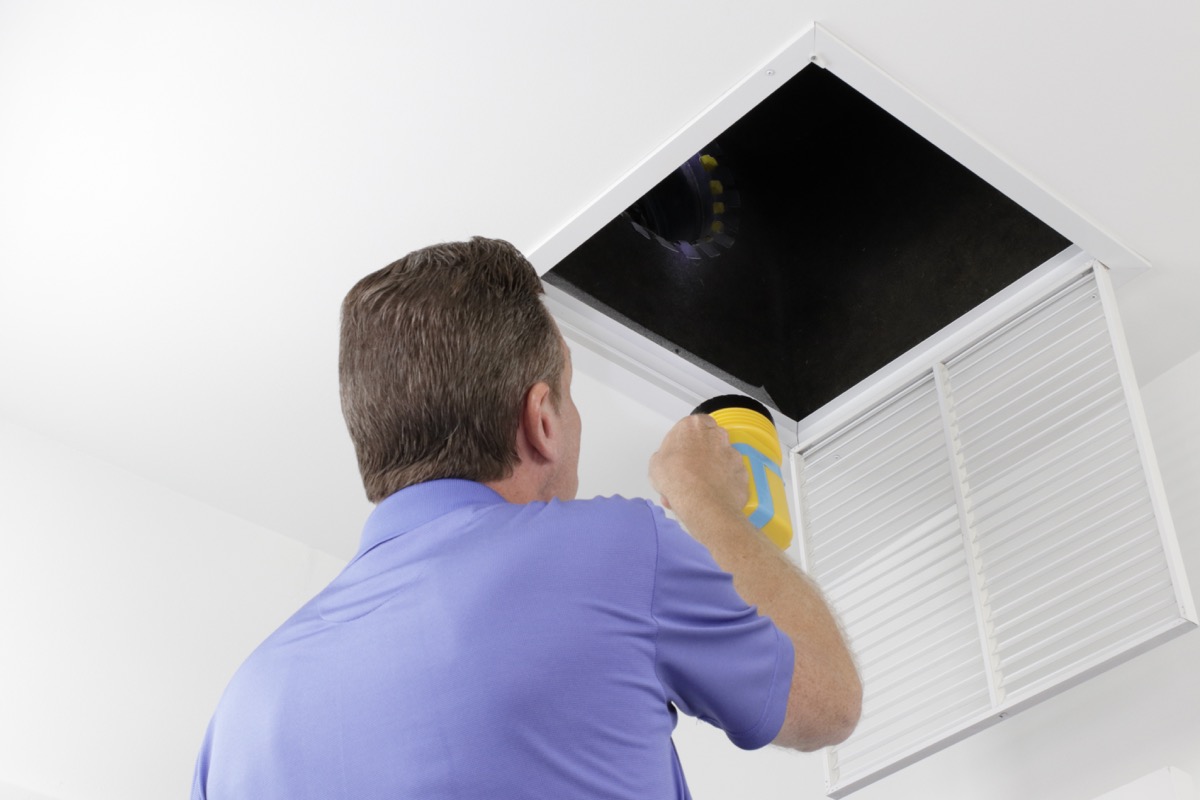
Leaks in your ductwork that go un-repaired can mean major problems in your future. “Excess dust in your home could be the result of leaky ducts pulling in dirt or dust-laden air from your crawlspace or attic,” says Ciresi. In addition to spreading debris throughout your home, this can also send your electric bills skyrocketing and strain your HVAC system, making it less effective over time.
31
Fixing HVAC leaks with duct tape
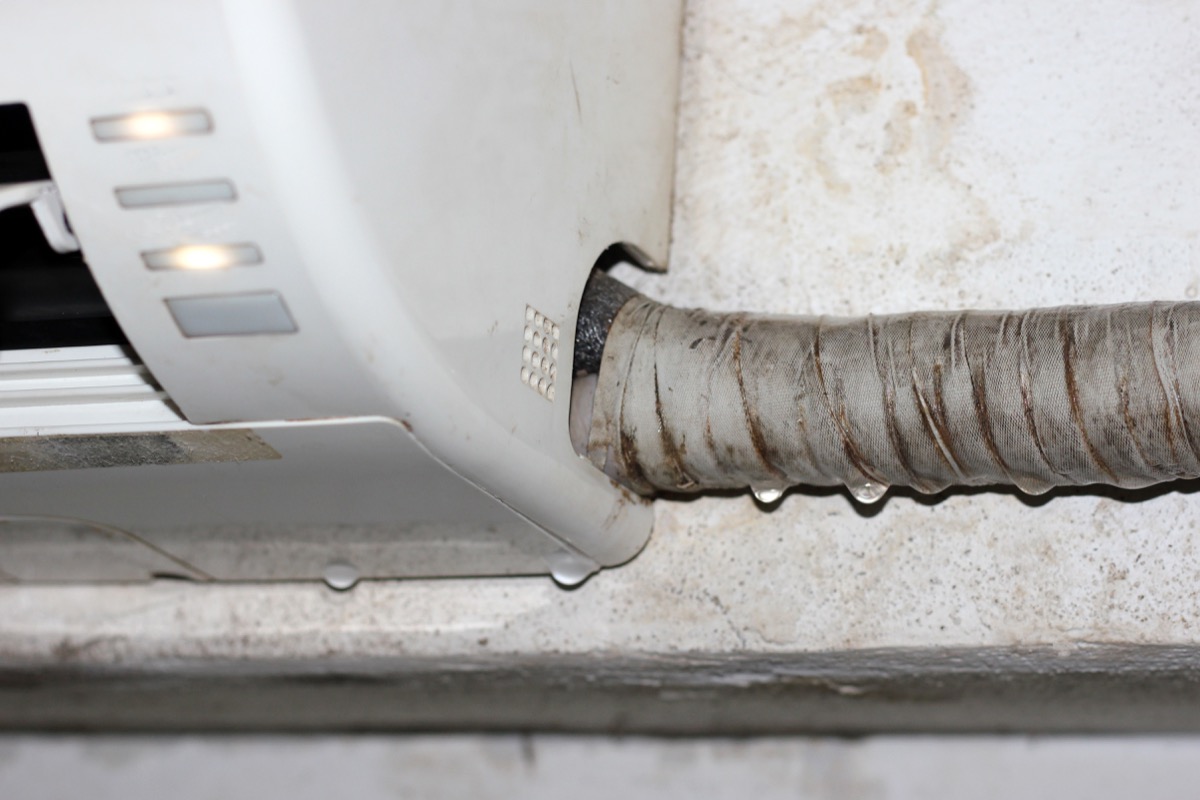
Duct tape may be strong, but it’s not the solution to your HVAC issues. “There is aluminum tape that you are supposed to use and it is not expensive,” explains Jeremy Maher, owner of Phoenix Home Remodeling. He notes that it’s even easier to apply than duct tape, and will actually last.
32
Using bleach to clean HVAC pipes
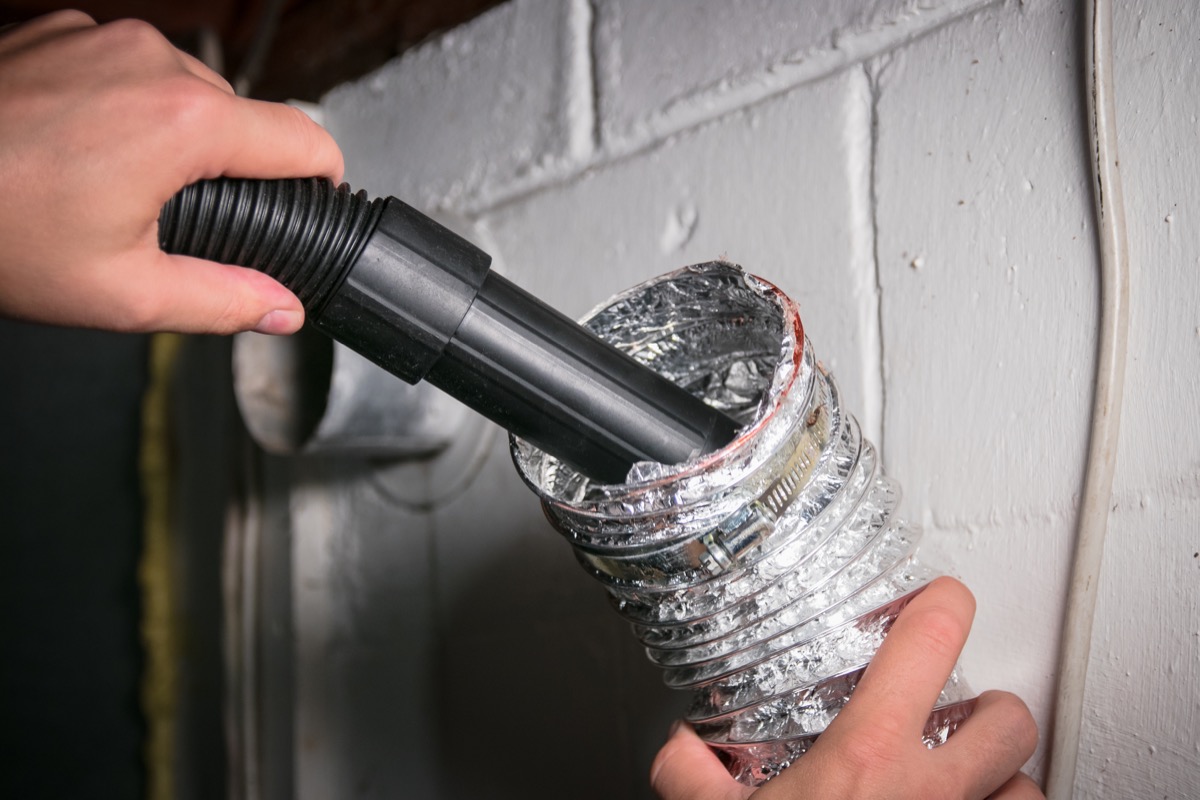
Bleach may be fine for doing your laundry, but don’t use it to clean your HVAC pipes. “Bleach not only eats away at the pipes itself, but also on the glue and cement joining the line,” explains Anthony Perera, owner and founder of air conditioning service Air Pros USA.
33
Not replacing your HVAC filters
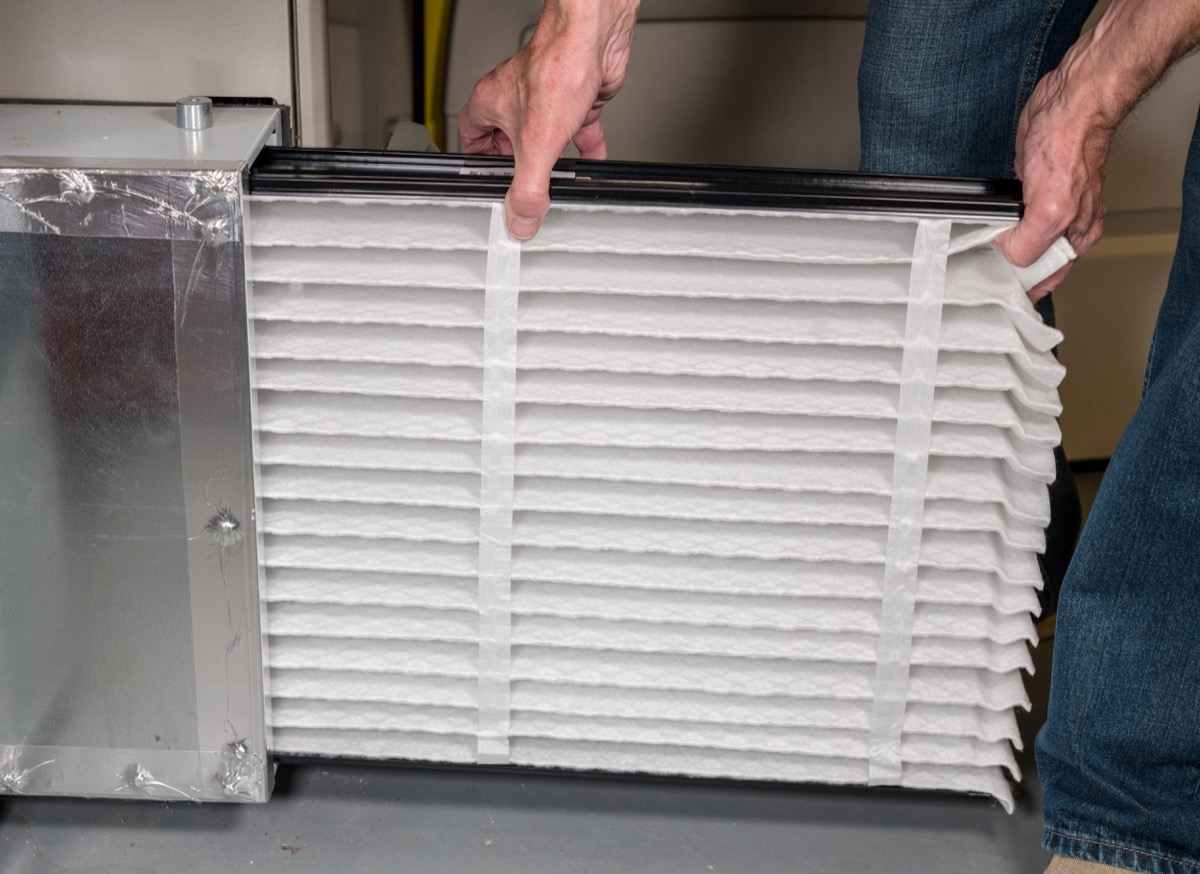
Failing to replace your HVAC filters frequently enough can cause problems down the road that extend beyond a time-consuming cleaning job. “A dirty or clogged filter will impact efficiency and could even cause damage to your system,” says Dawson. According to the expert, you should change your HVAC filters every one to three months, and more frequently if you smoke indoors or have pets.
34
Or using new model filters on an old furnace

While you may want to use the most advanced new filters on your furnace, doing so is undoubtedly a mistake. “Older furnaces cannot keep the air flow through the thickness of the new air filters and will switch off your furnace,” explains DIY building expert Tammy Seed, founder of Tammy Builds.
35
Not cleaning your gutters regularly
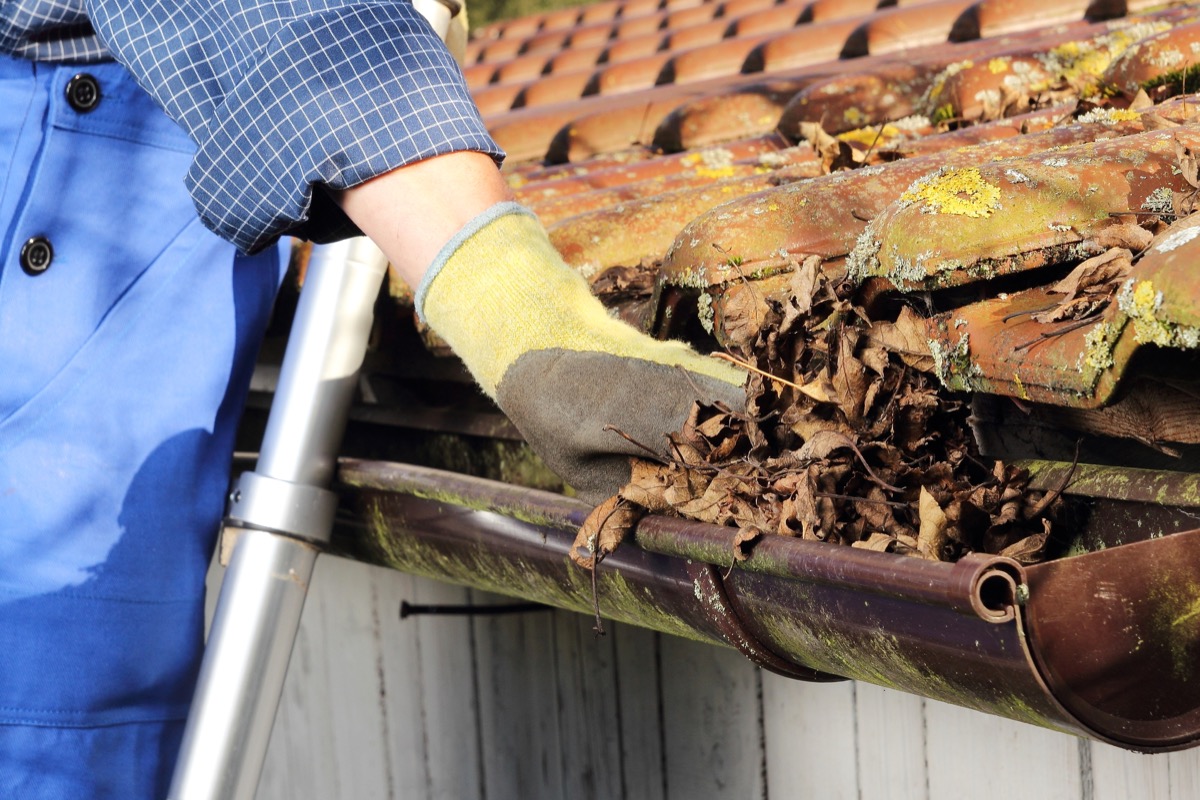
A few leaves in your gutters may seem like no big deal, but they can lead to quite a lot of issues over time. “Clogged gutters cause rain water to stream down your exterior walls, seeping into cracks and leading to water infiltration of the interior walls of your home, causing drywall damage, and toxic mold growth,” explains Philadelphia-based realtor Jim Armstrong. To make sure your gutters are in good shape, have them cleaned at least twice a year, he says.
36
Not coating your roof regularly
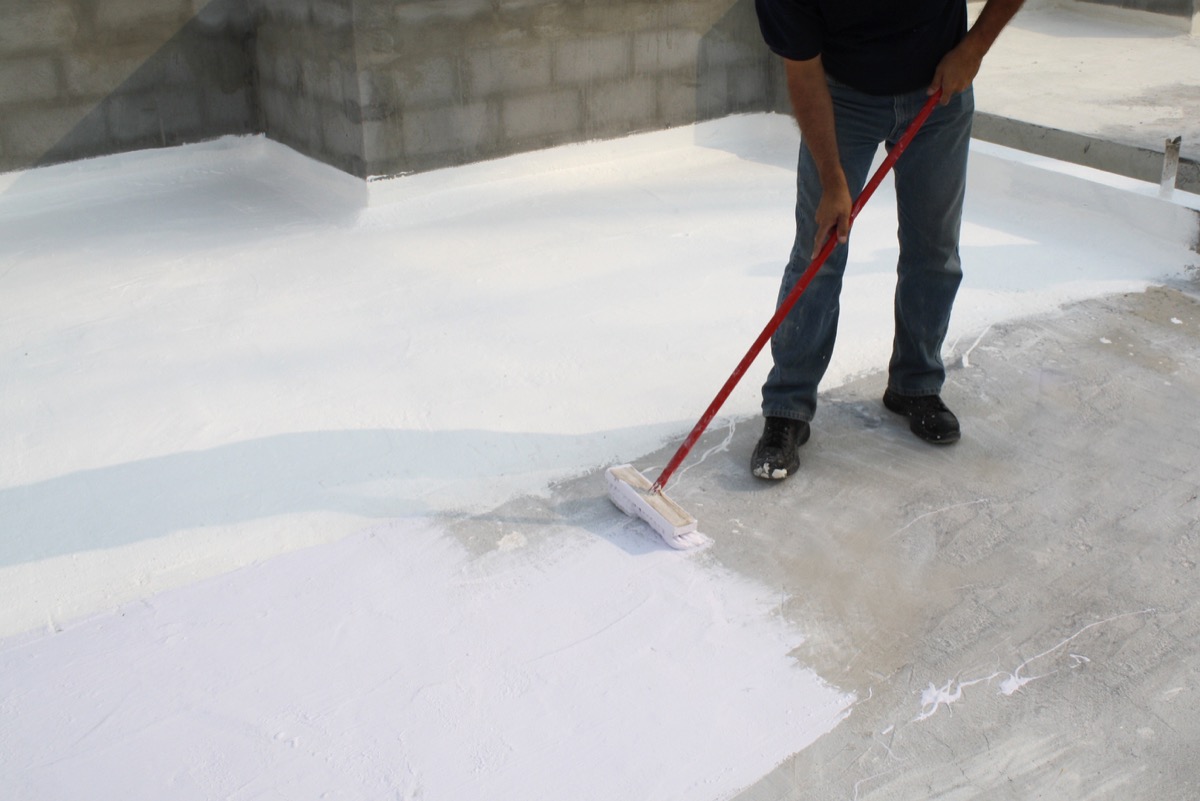
If you have a flat roof, regular maintenance is key if you want to avoid costly repairs in the future. “You can exponentially increase the roof life by applying a reflective coating every five years,” explains Armstrong, who notes that doing so can also keep your home cooler, thus lowering your electric bills in the summer.
37
DIYing a metal roofing job
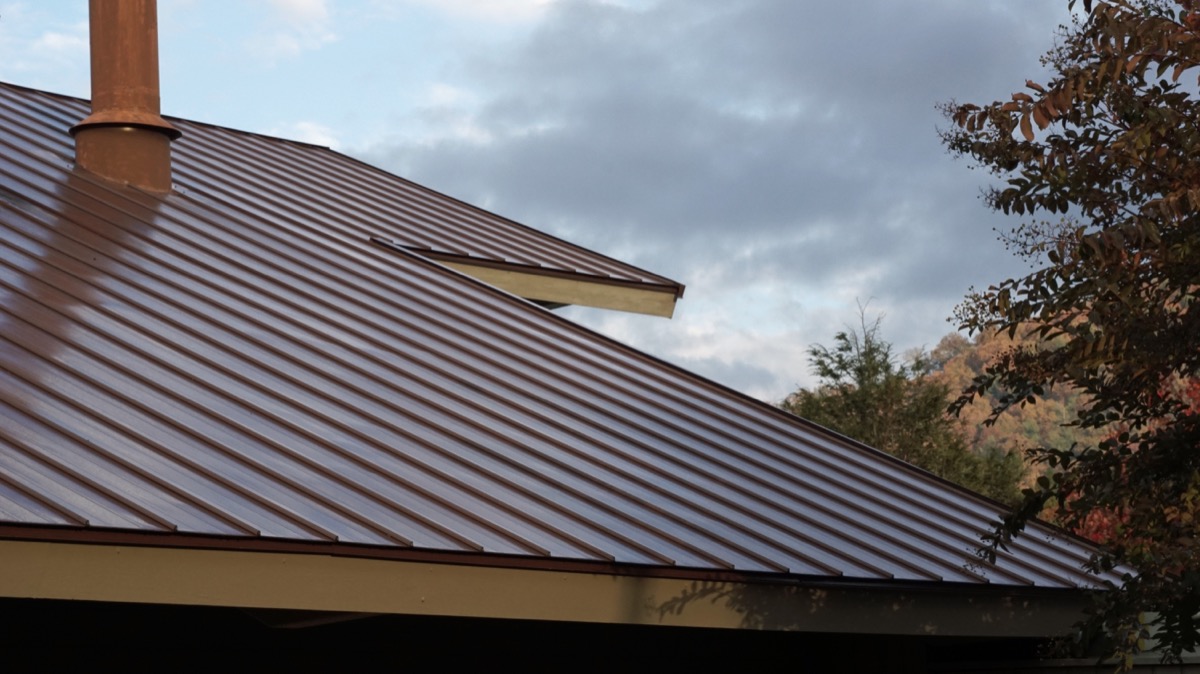
In addition to being time-consuming and requiring special skills, installing metal roofing may also warrant specialized tools, meaning it’s best to leave this job to the experts. “I have countless times been contacted by homeowners who purchased metal roofing materials, started the job, and decided they were in way over their heads and needed professional help,” says Todd Miller, president of Isaiah Industries, a manufacturer of metal roofing materials.
Miller adds that there can be confusion as to what needs to be ordered, “making you vulnerable to expensive small orders to finish up the project.” If you are intent on doing it yourself, remain in close consultation with your local supplier, who can serve as a guide. “Even then, expect a lot of hours of very hard work,” Miller says.
38
Not maintaining smoke and carbon monoxide detectors
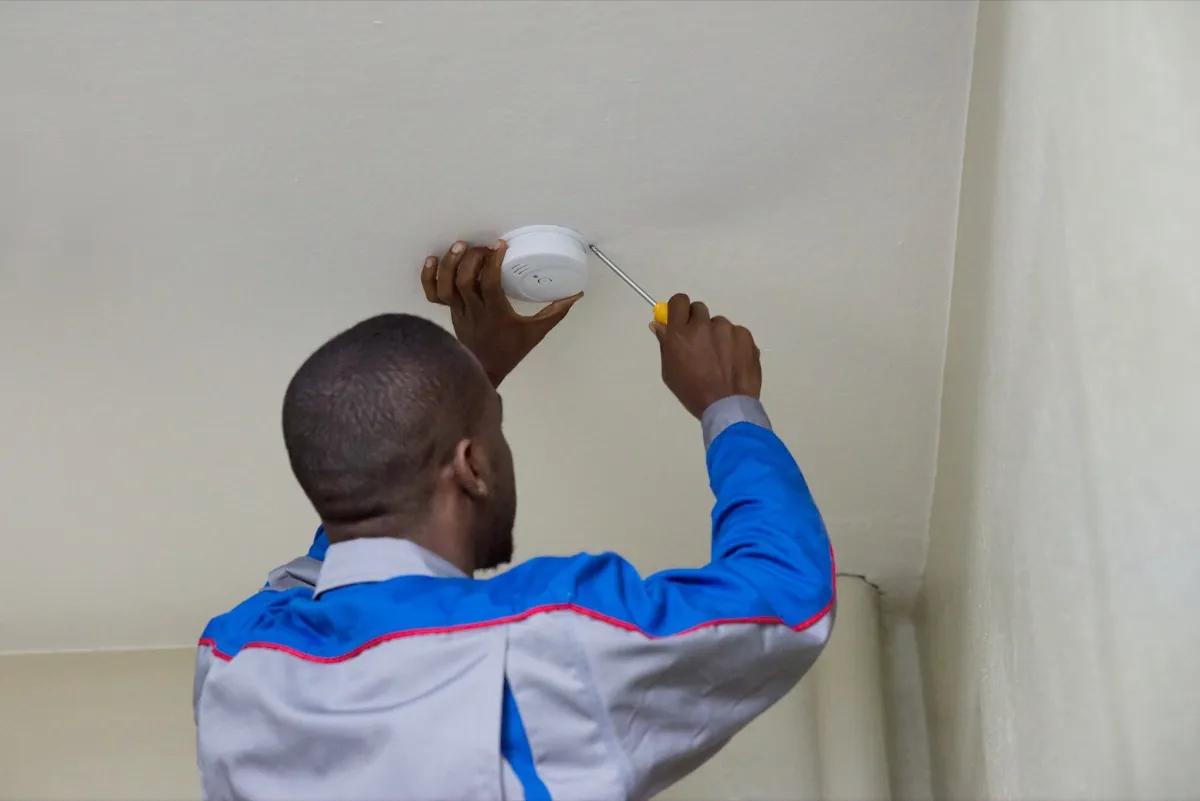
What should be at the top of your home maintenance to-do list? Checking those smoke and carbon monoxide detectors. “Change the batteries twice a year—at Mother’s Day and the fall change in daylight savings—and replace the detector itself every 10 years,” recommends Armstrong.
39
Not draining your water heater
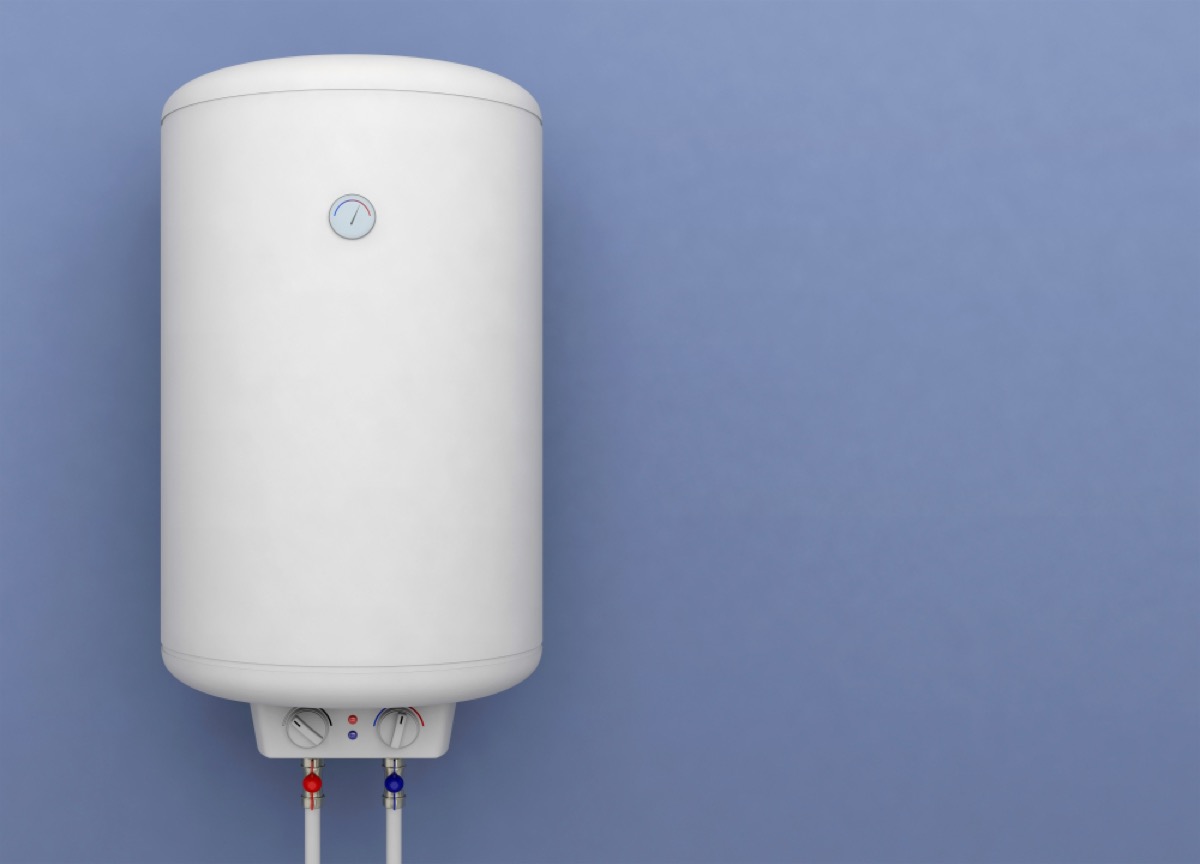
Water heaters can collect mineral deposits over time, which eventually “form a thick, crusty coating that will begin to chip off and clog faucets, drains, and the water heater valve,” explains house flipper Shawn Breyer, owner of Breyer Home Buyers. Over time, this can cause your heater to run constantly, cracking the inner lining and increasing your utility costs. To avoid this, drain your water heater every six to 12 months.
40
Using tablet cleaners to clean your toilet
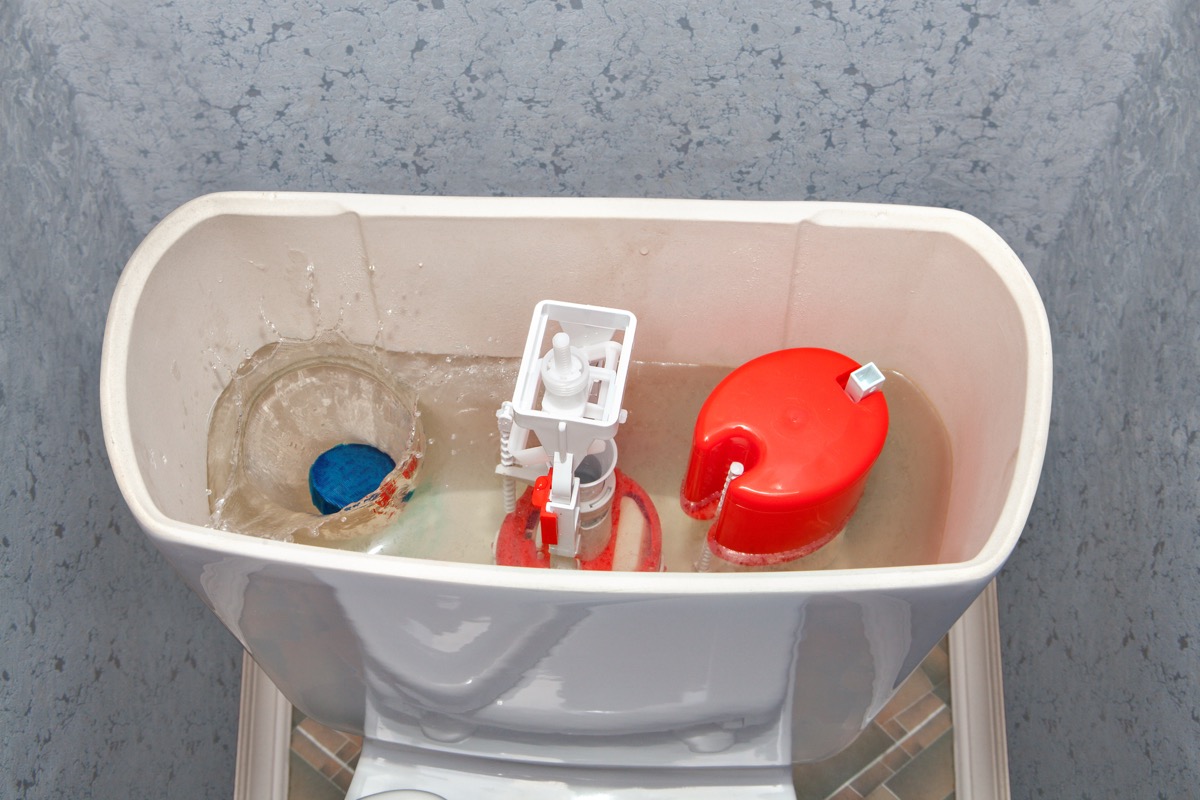
Those tablet toilet cleaners may seem like an easier way to clean your toilet, but they can cause major damage in the long run. “Those harsh chemicals hurt the interior components of the toilet,” says Maher. If you use them consistently, this may mean you have to frequently replace those rubber seals and valves that keep your plumbing working properly.
41
Not re-caulking your bathtub regularly
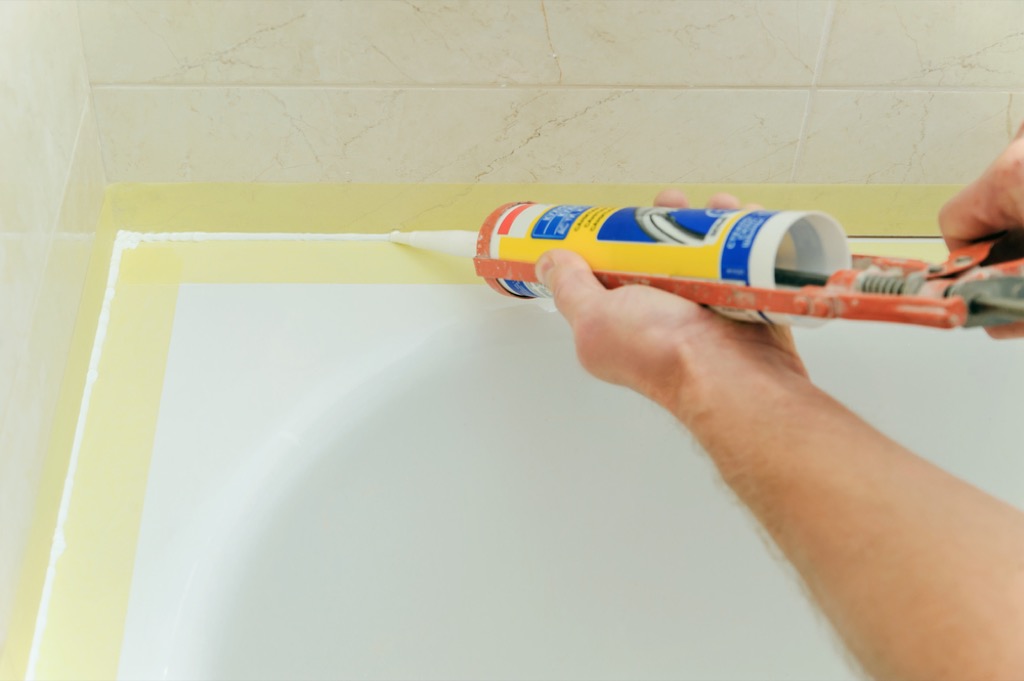
That worn-out caulk around your bath tub is doing more than just making your bathroom look unattractive—it could damage your home, too. “Over time, the caulking around your bathtub will deteriorate, allowing water to leak underneath the tub,” says Breyer, who notes that this kind of issue can result in mold and rot in your sub-flooring and joists, which could cost thousands to repair.
42
And not removing old caulk before re-caulking
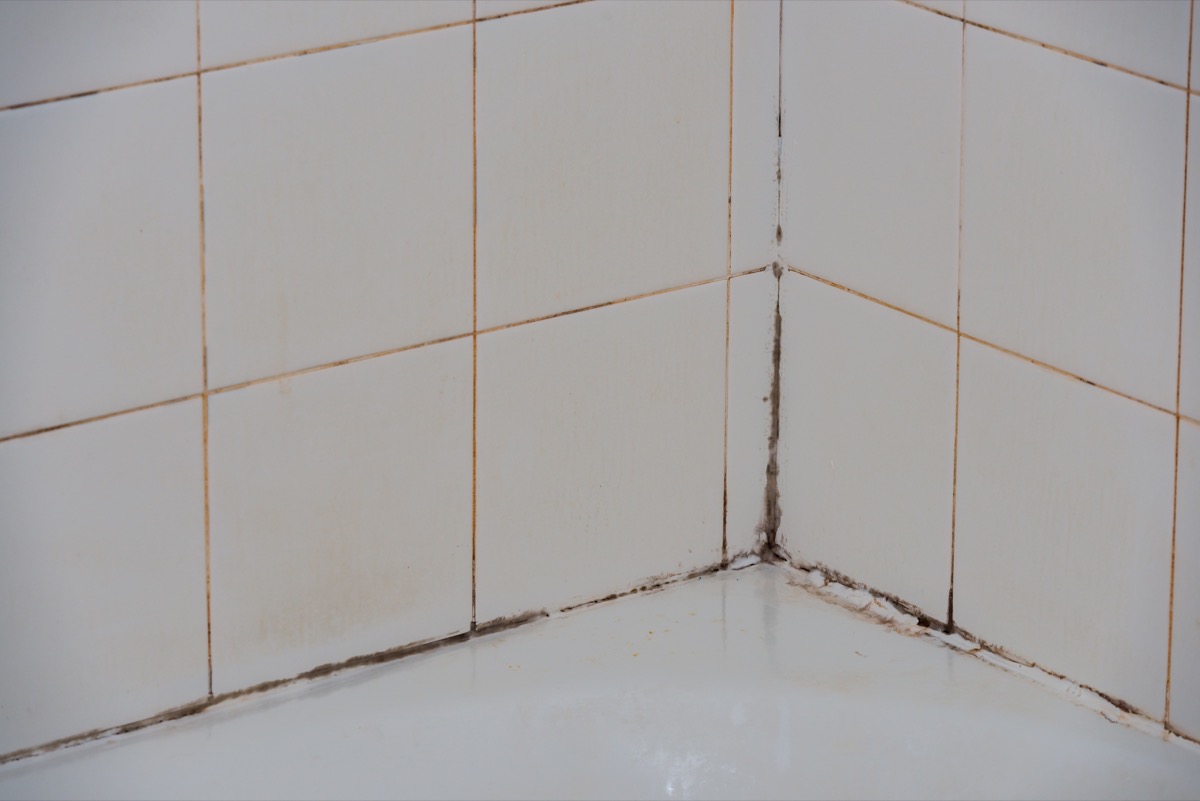
However, before you go to re-caulk that tub, it’s essential that you remove any existing caulk first. “This is a big issue because mold still grows over the top layer and it does not seal it properly, creating potential for leaks,” explains Maher.
43
Using silicone caulk on painted surfaces
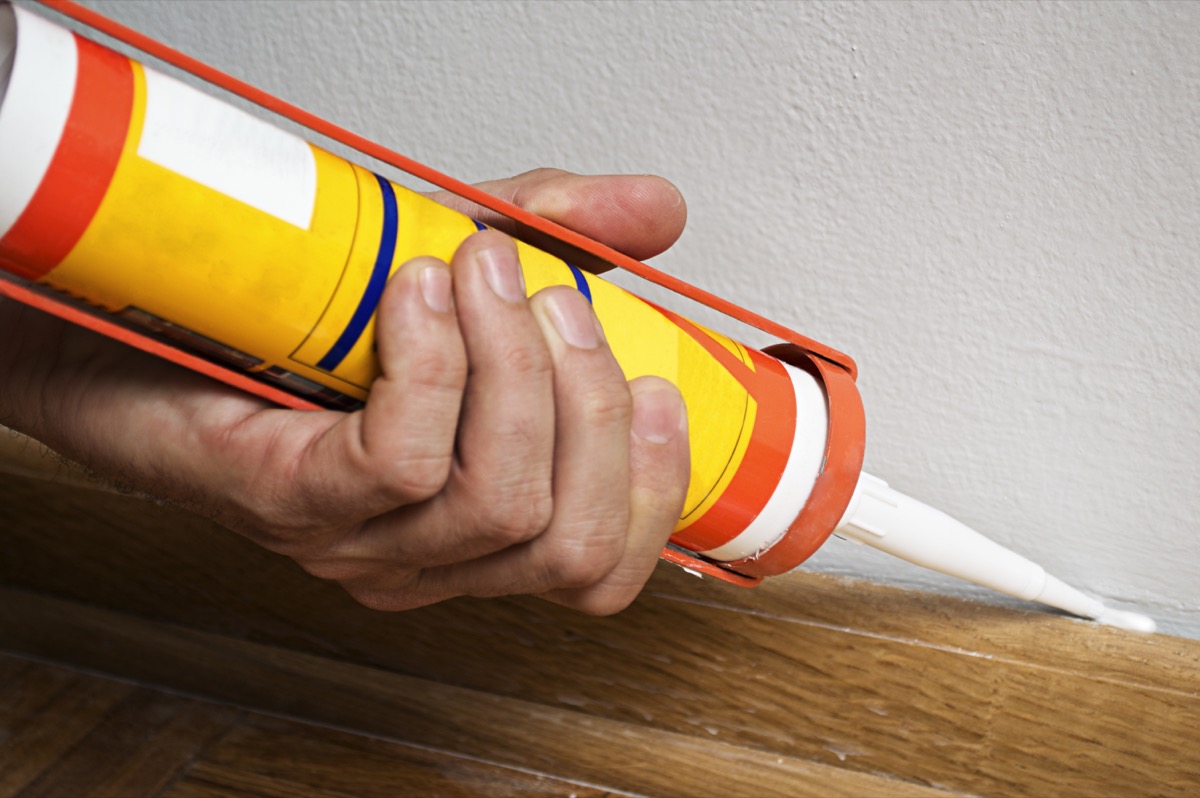
And when it comes to cracks in your walls, it’s important to use the right kind of caulk to repair them. “Use latex caulking as it will not crack once dry or over time the way silicone will,” says Seed.
44
Not scoring paint before removing baseboards
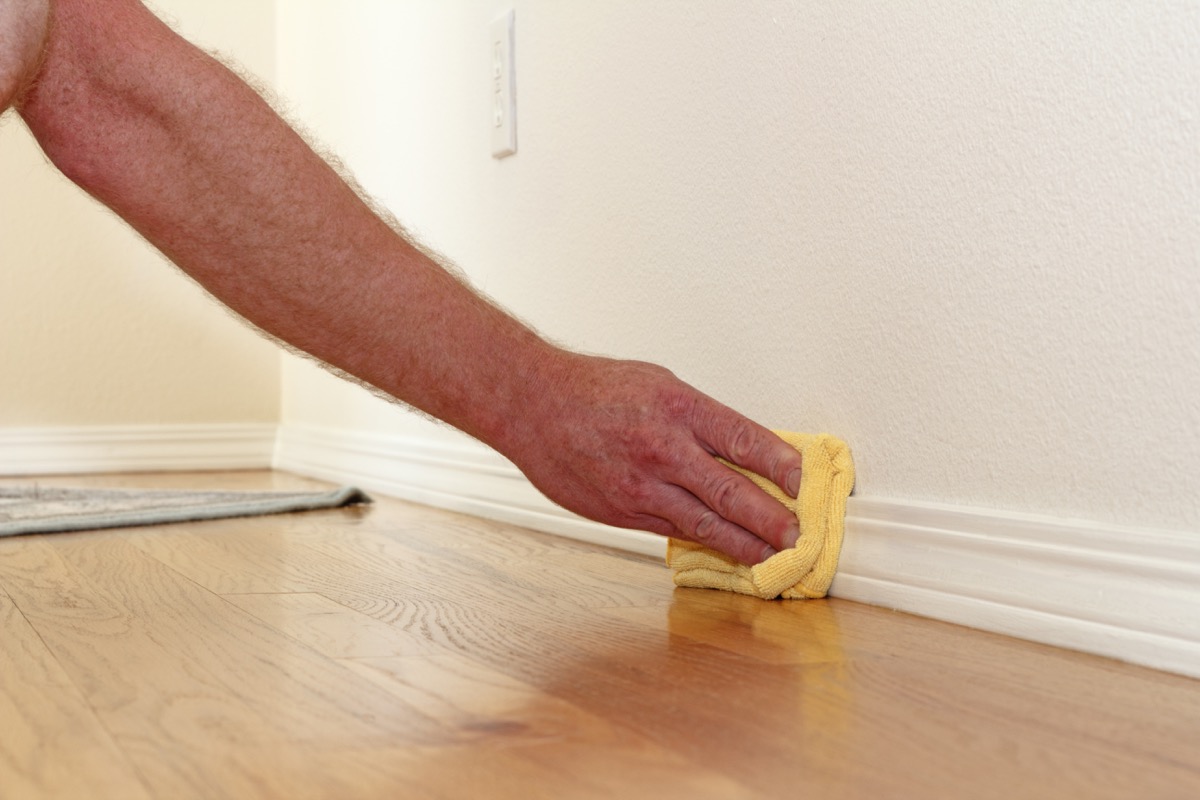
If you’re removing baseboards, it pays to score the paint above it with a knife first. If you don’t, “the paint and sometimes drywall exterior layer peel off, creating the need to hire a texture specialist to repair all of those areas,” explains Maher. The wall then needs to be repainted, meaning what started as a minor DIY job quickly becomes a major one that’s expensive to boot.
45
Hiding electrical junctions in walls
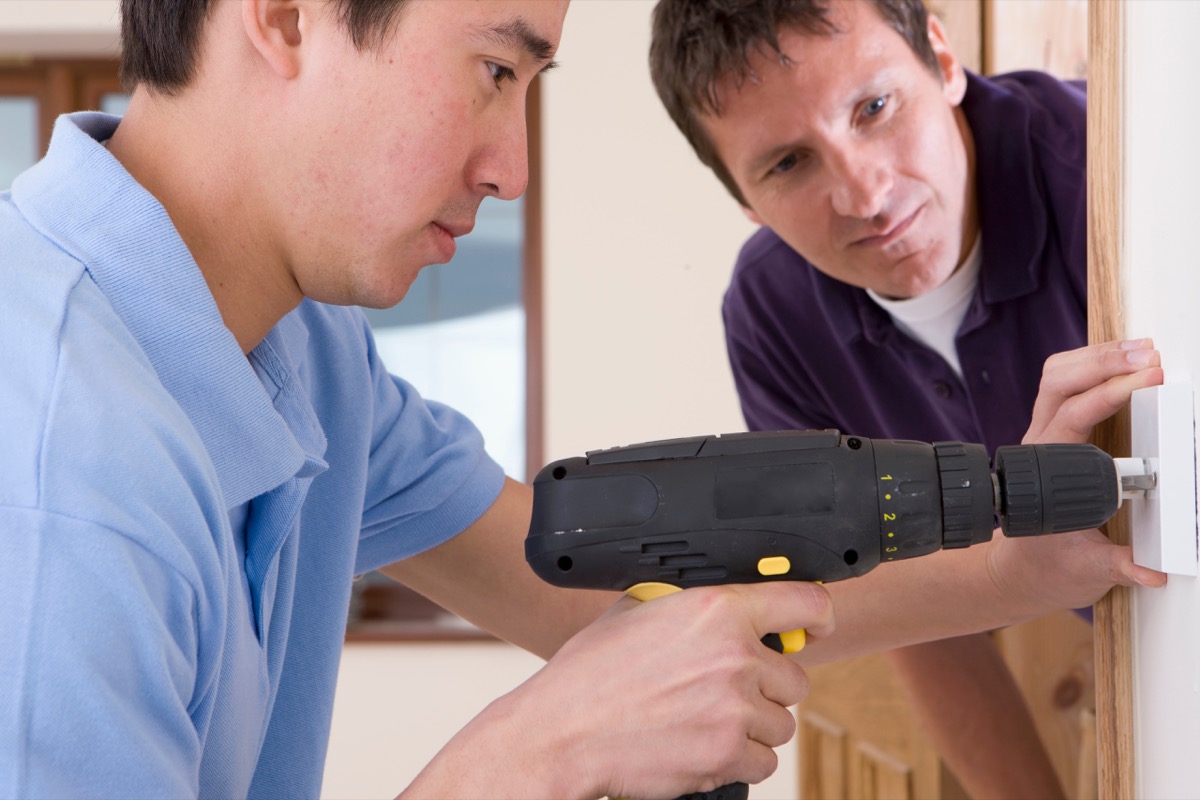
Those junction boxes may not be pretty, but trying to hide them within your walls is a mistake you’re likely to regret. “Electrical junctions are required to be enclosed in a junction box with a cover visible to anyone looking for electrical connections, so they can troubleshoot electrical problems,” explains Taylor.
46
Not correcting diagonally-oriented wiring
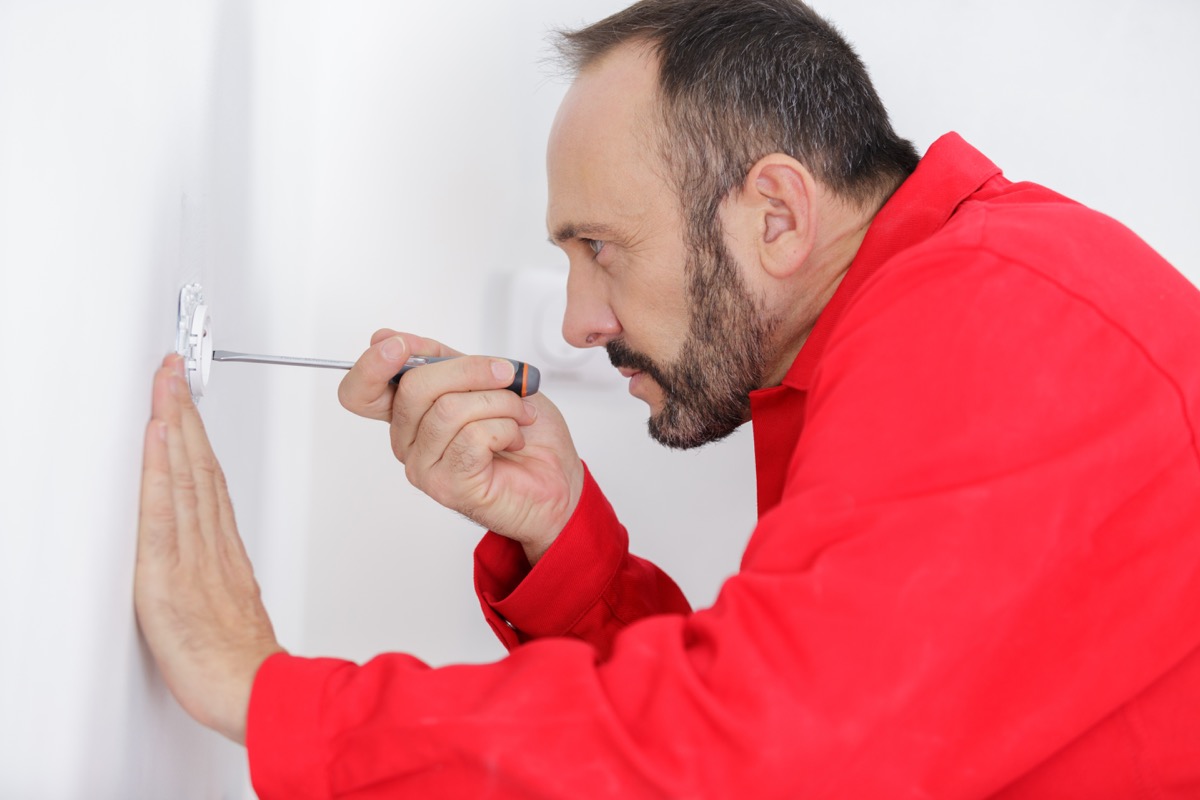
If the wiring inside your walls is haphazardly placed, you can’t afford to keep it that way. “Any half-decent electrician will tell you that any wiring should fall vertically or horizontally in a straight line,” explains Lee Jackson, owner of Lee Jackson Air Conditioning. “This is just best practice because if anyone else is doing work on your house, they won’t electrocute themselves by drilling into a misplaced wire.”
47
Using “cheater plugs” on two-prong outlets
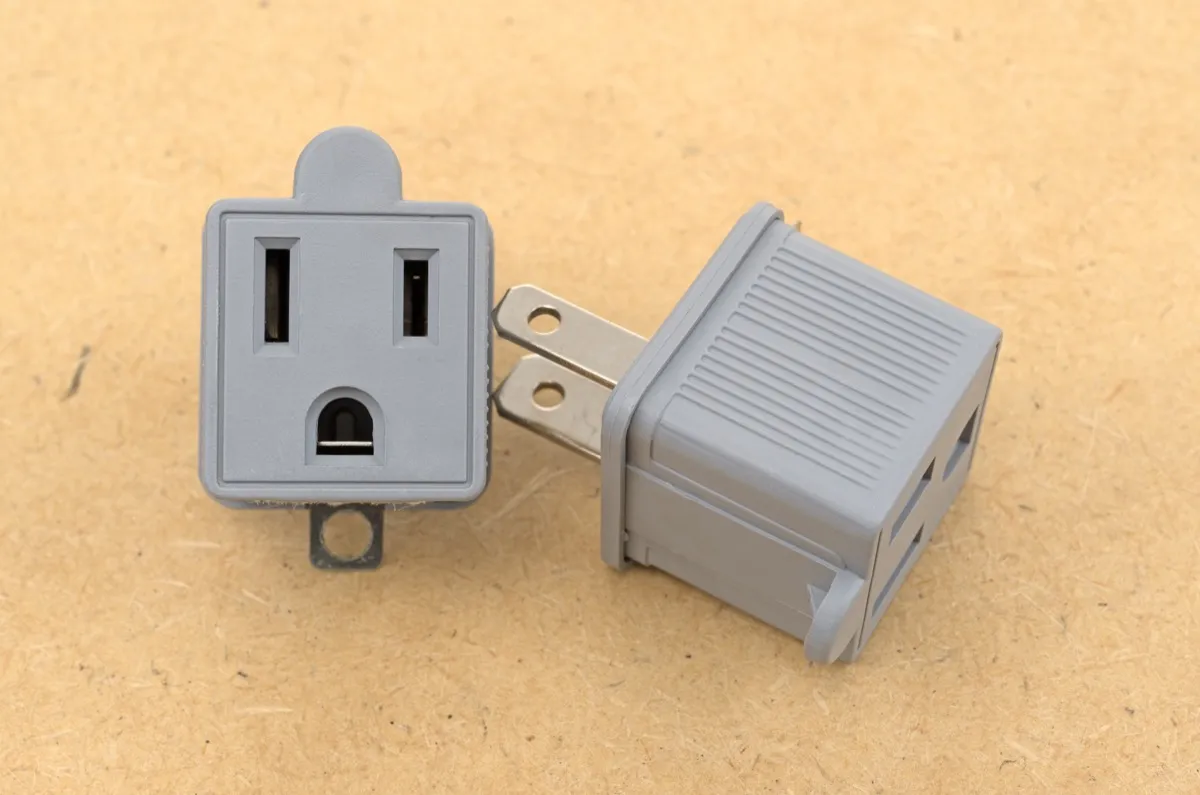
While it may seem harmless—and cheaper—to use an adapter that allows you to get a three-prong plug to a two-prong wall outlet, the reality is that it’s neither. “You should resist the urge to use these so-called ‘cheater plugs,’” says Dawson. “The ground wire is there for safety and simply bypassing it creates a potentially serious hazard.” Instead, Dawson recommends having a licensed electrician upgrade your outlets to reduce your risk of an electrical fire.
48
Not using galvanized nails and screws on your home’s exterior
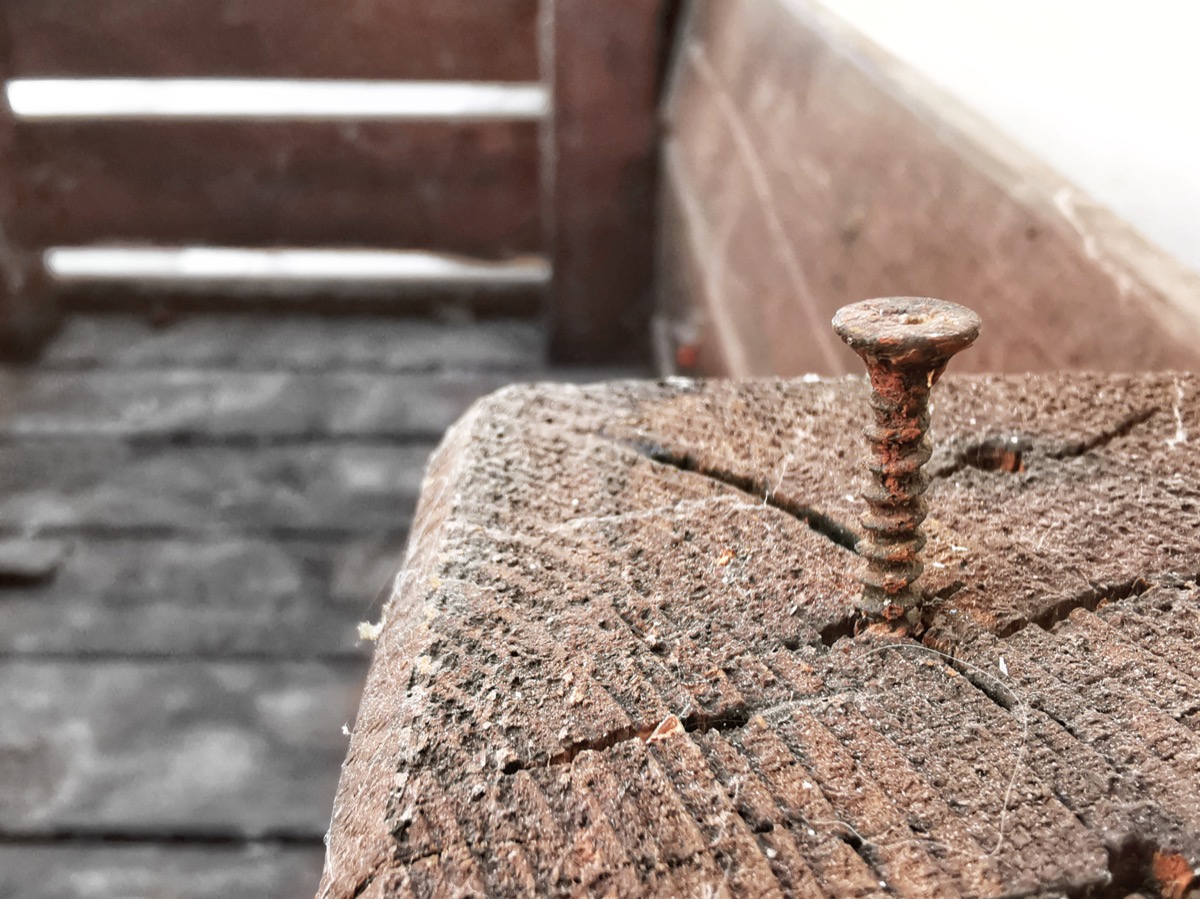
Using any old nail or screw on the exterior of your home is a surefire way to find yourself having to re-do the job just a few months down the line. “Using galvanized nails and screws prevents rust stains on your home,” explains Taylor.
49
Installing new siding without consulting an expert
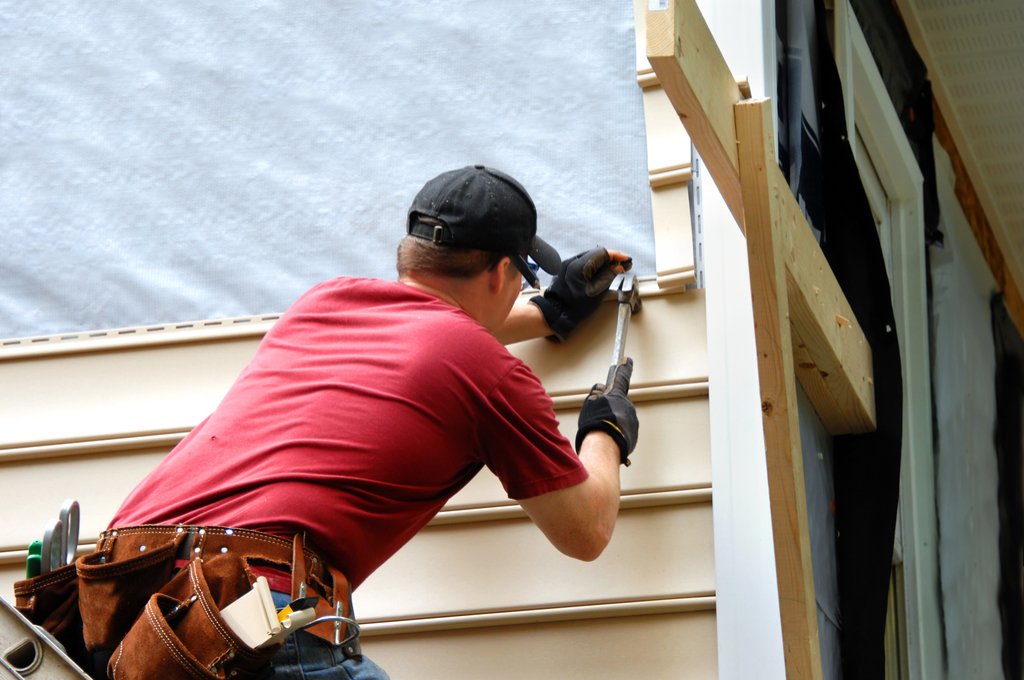
The process of adding siding to your home is time-consuming, costly, and requires a high level of precision. So trying to do it yourself is a big mistake. “The tools required for siding installation are much more comprehensive than what most homeowners already have in their possession,” explains Andy Lindus, COO of Lindus Construction. Worse yet, incorrect installation may void your manufacturer’s warranty should the product fall apart or get ruined.
50
Not hiring a professional when you need one

It’s important to have confidence when it comes to being able to handle certain home maintenance tasks for yourself. But just as important is getting the job done right and knowing your limitations. “Poorly done DIY jobs end up looking like poorly done DIY jobs,” cautions Taylor. If you’ve tried and something’s still not working, it’s time to call in the experts.